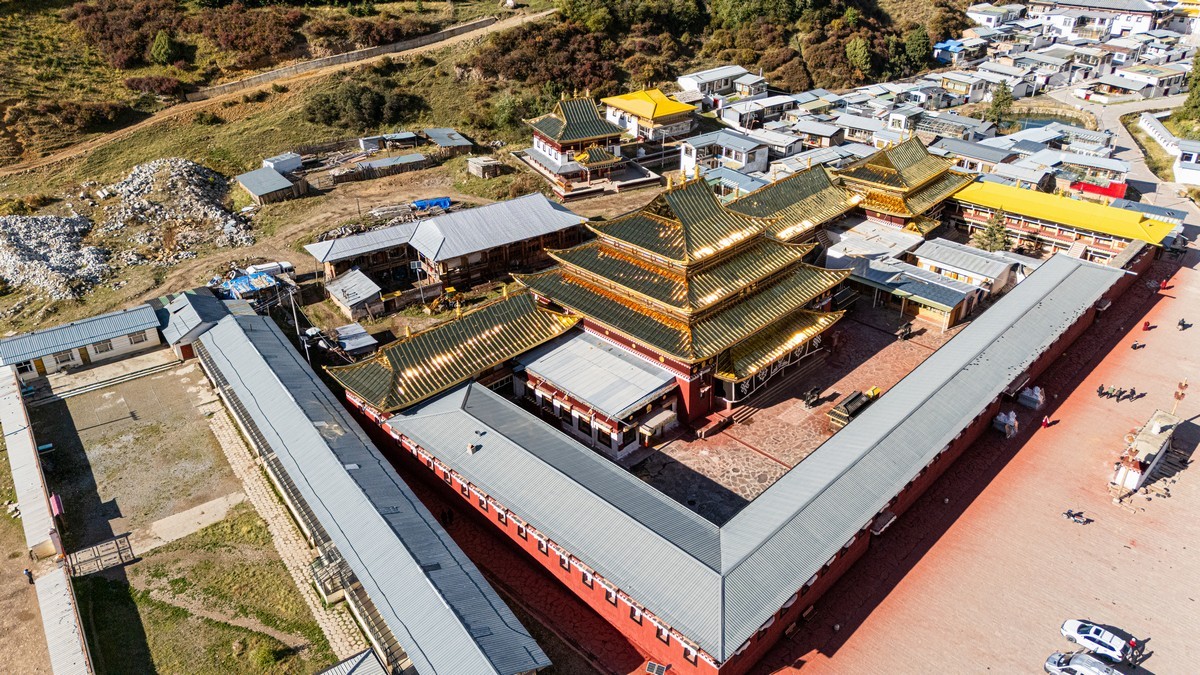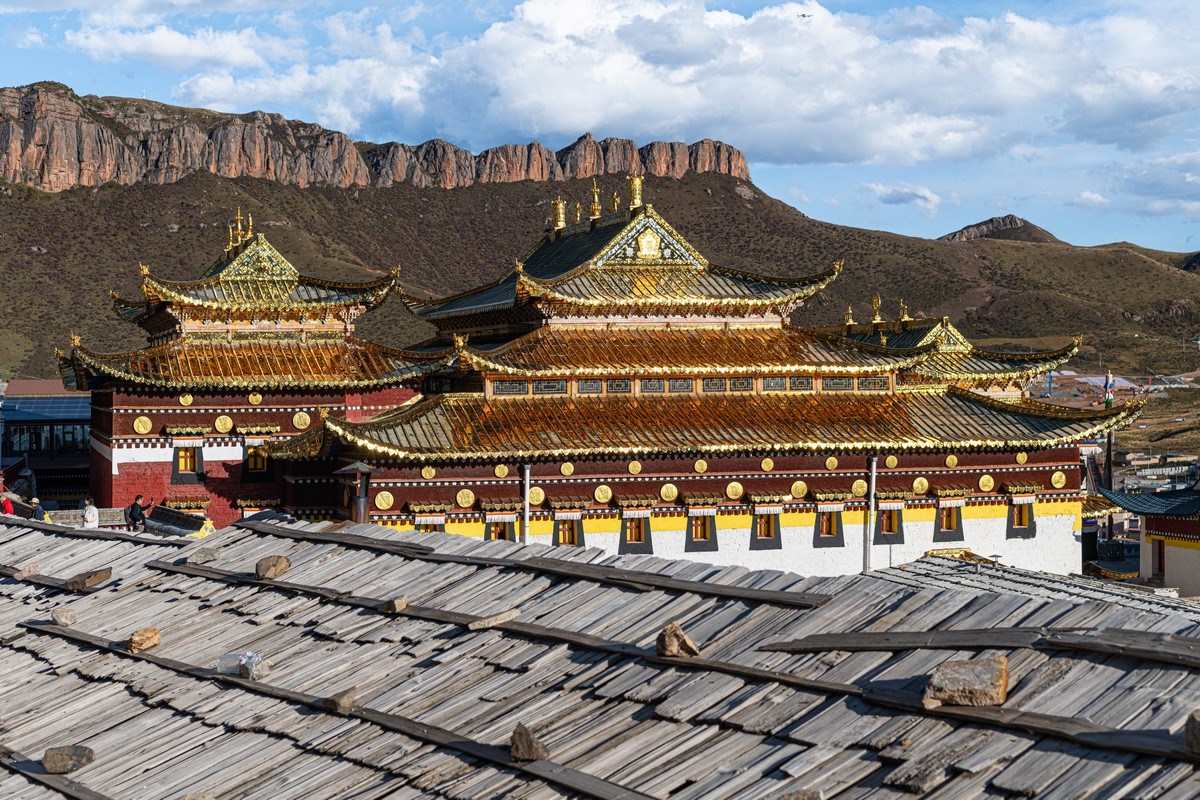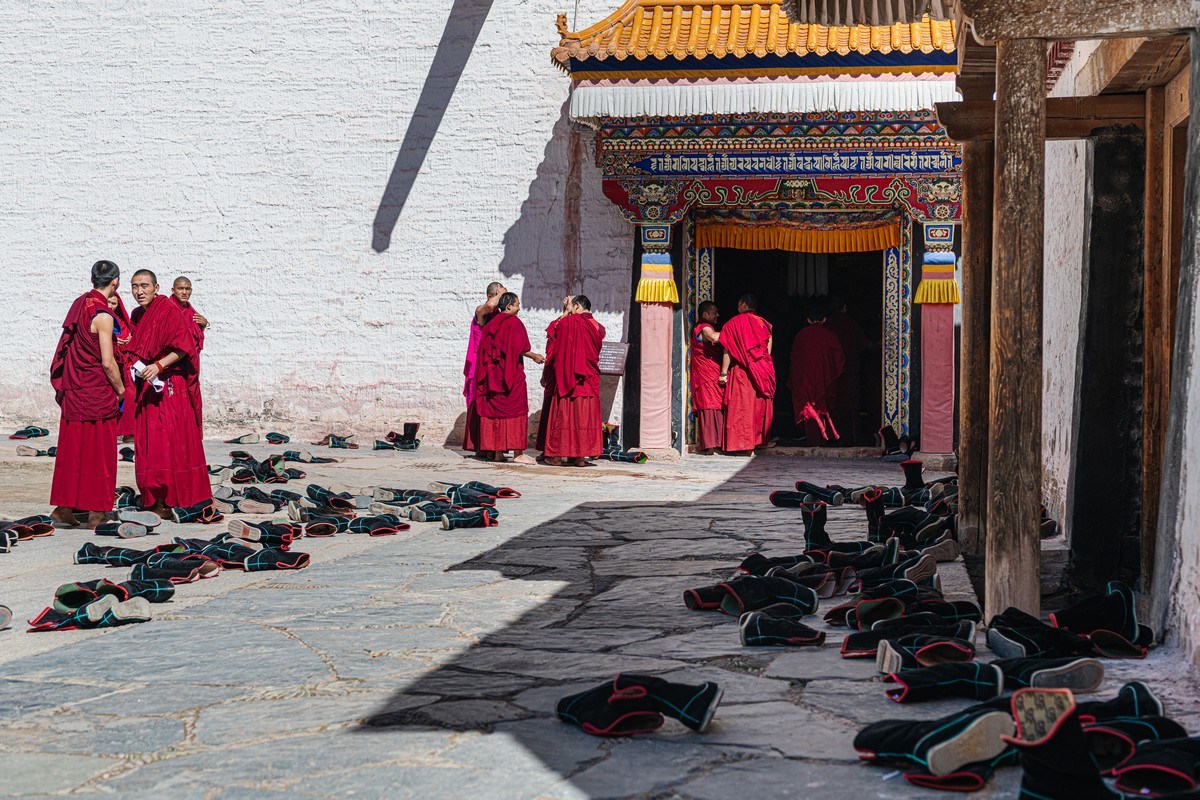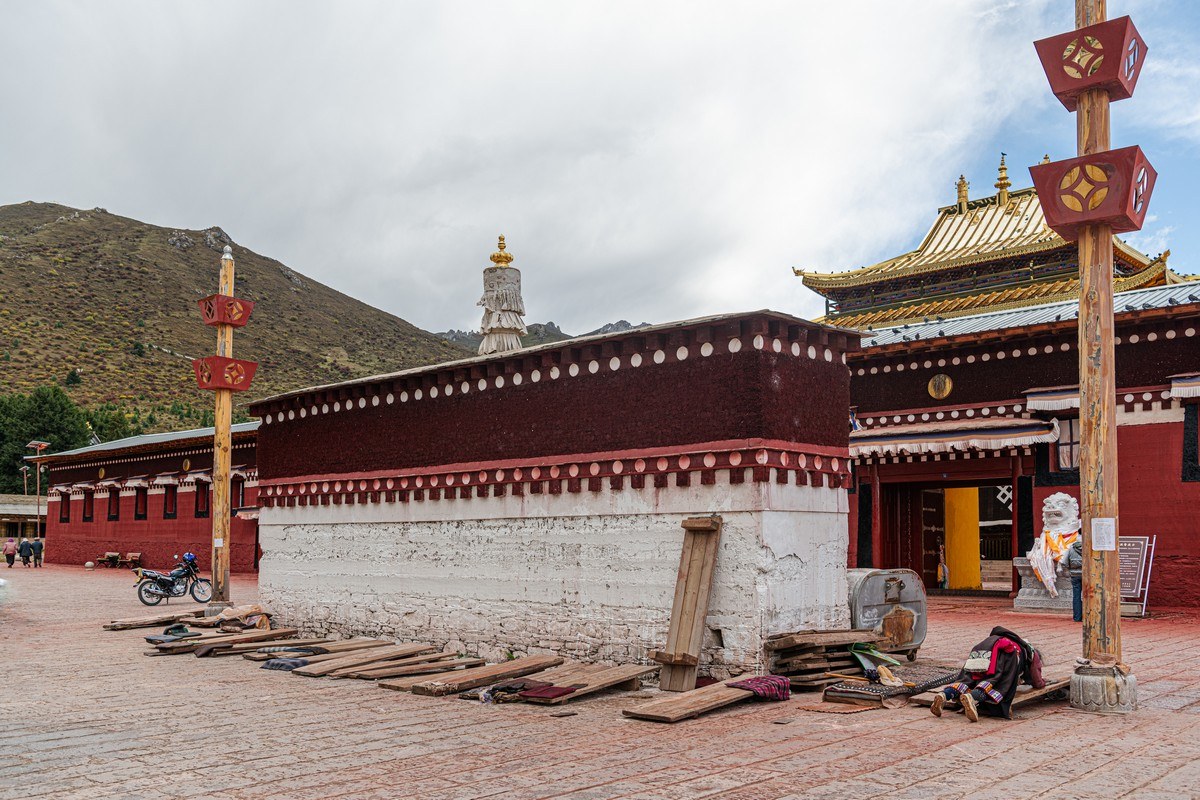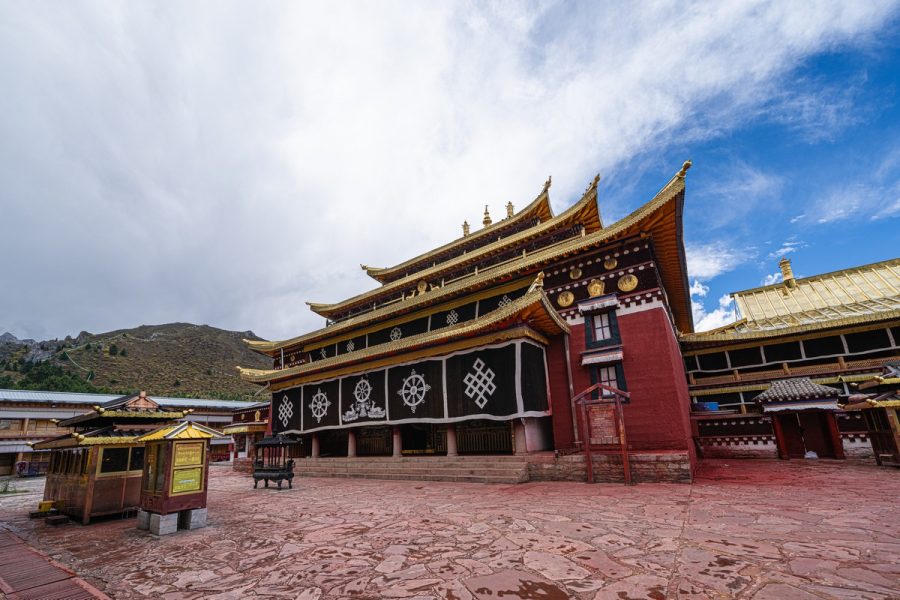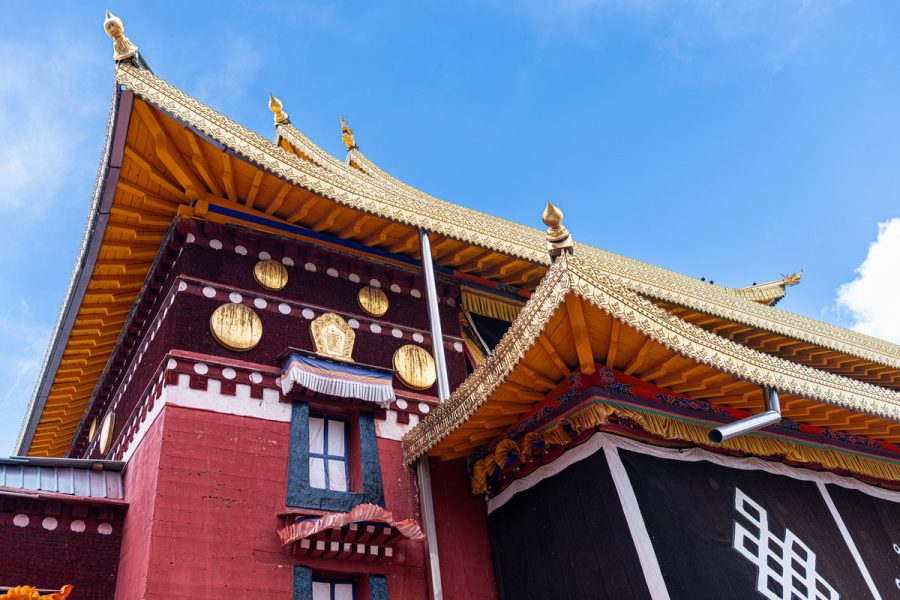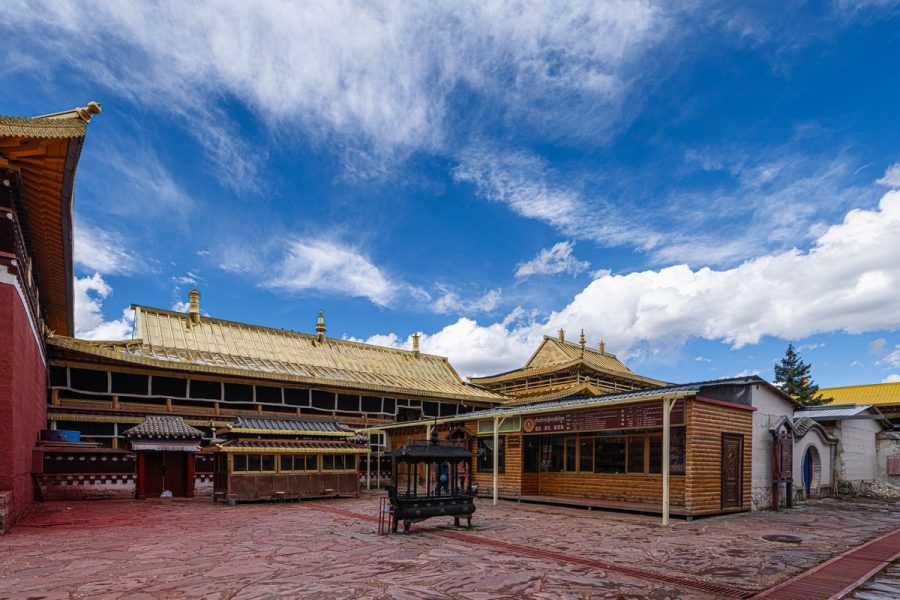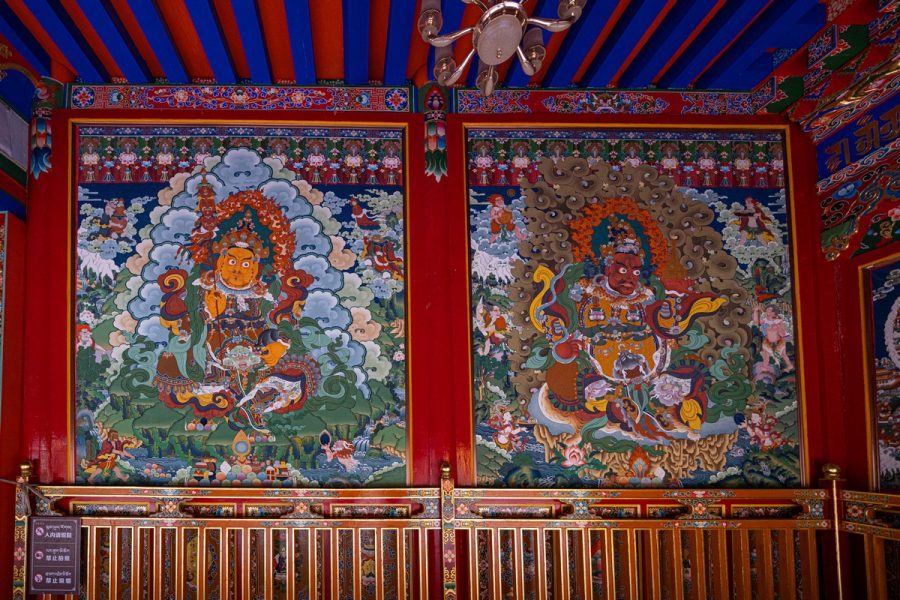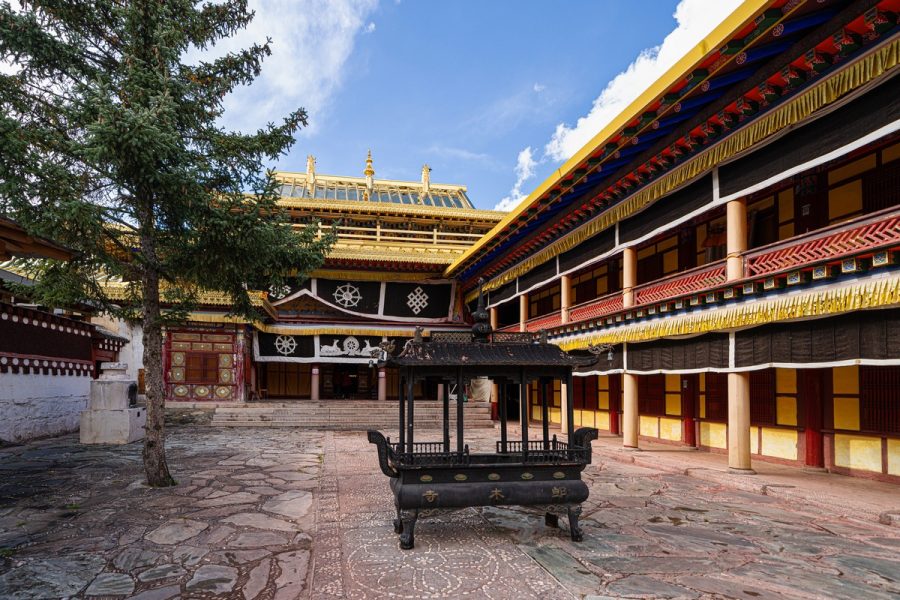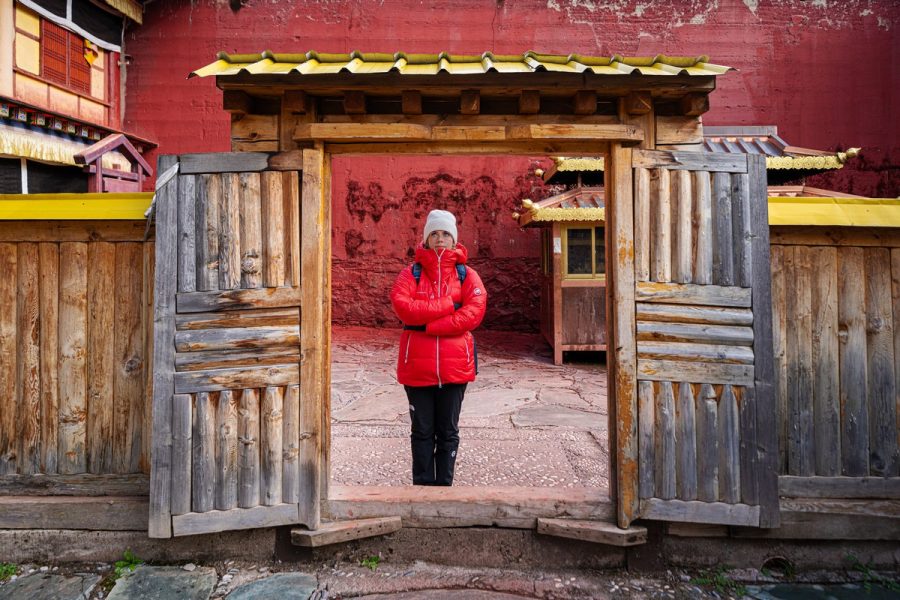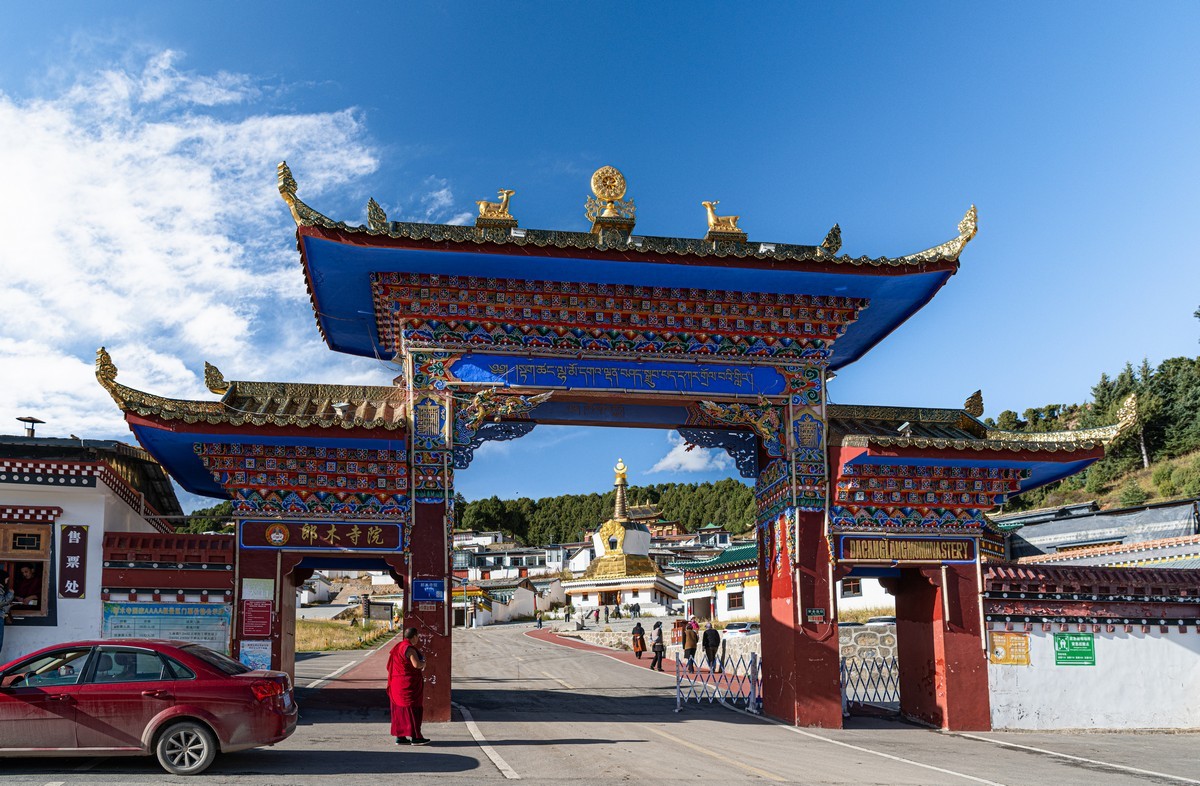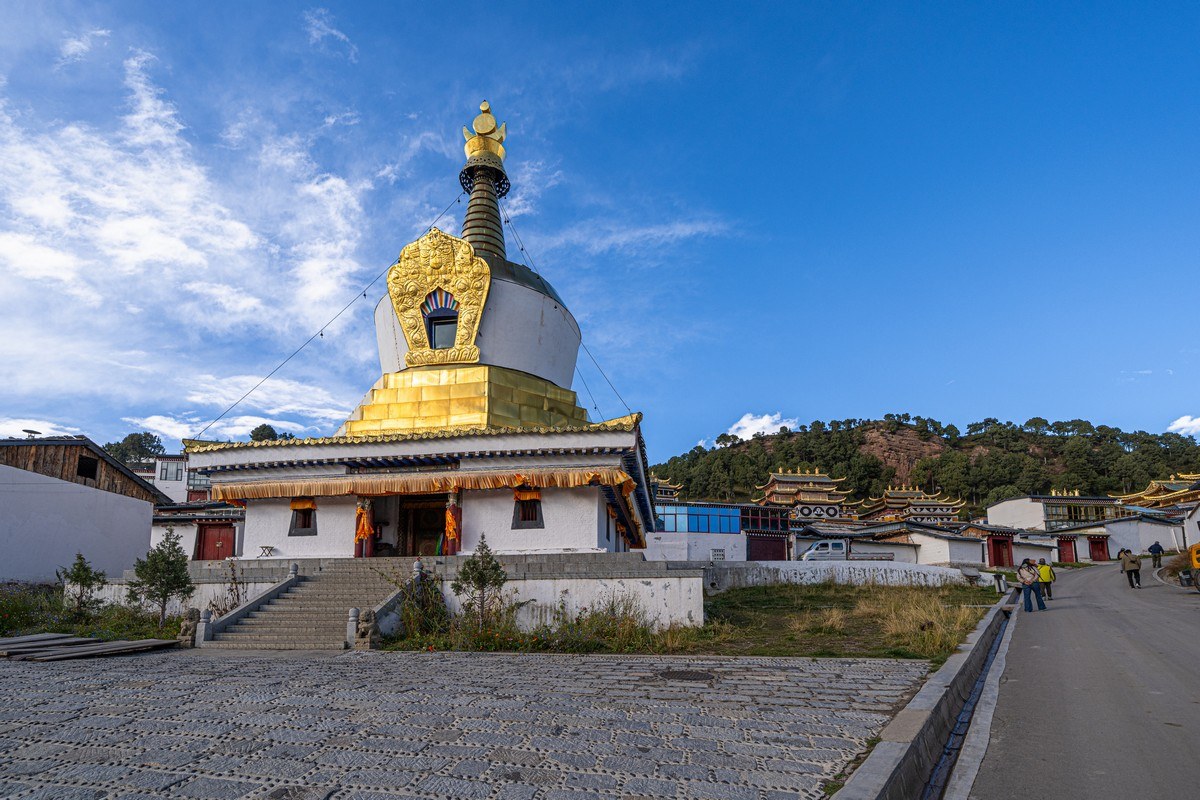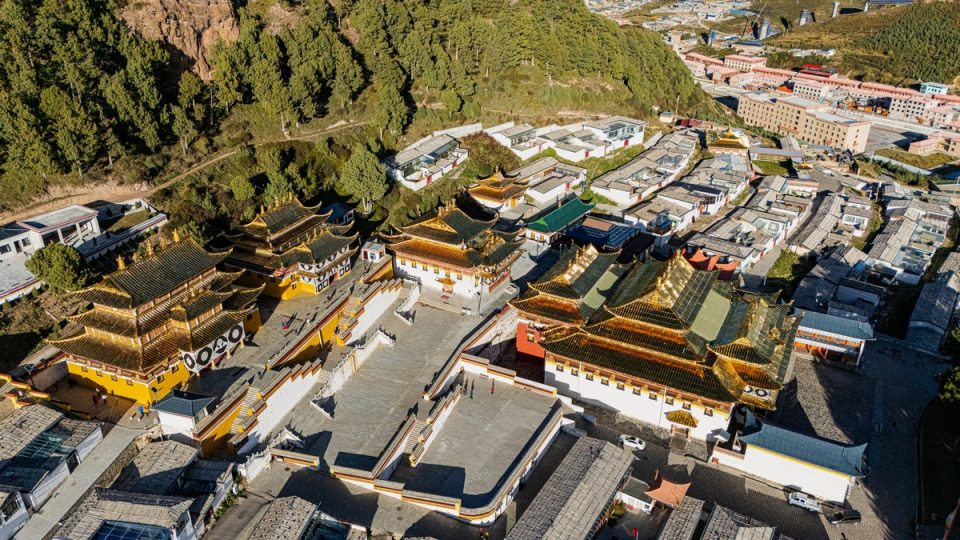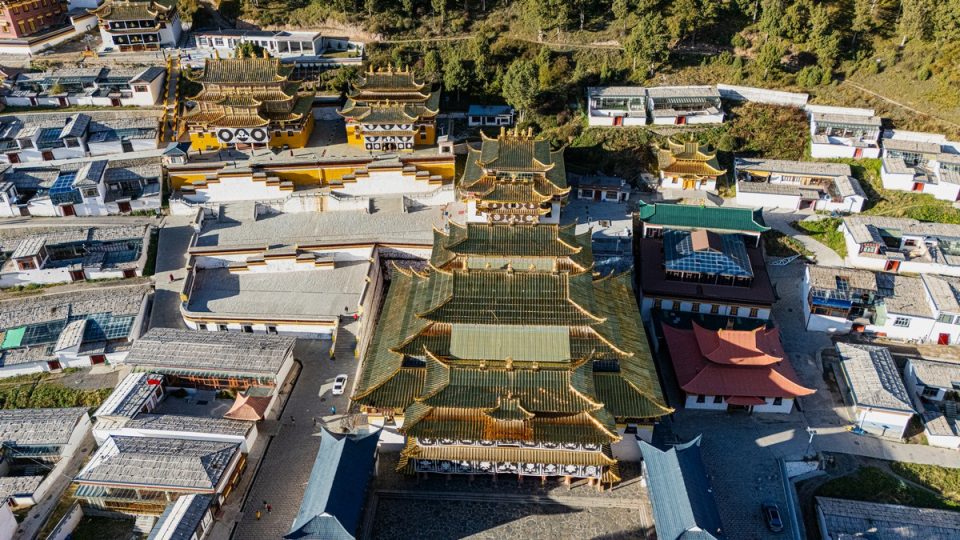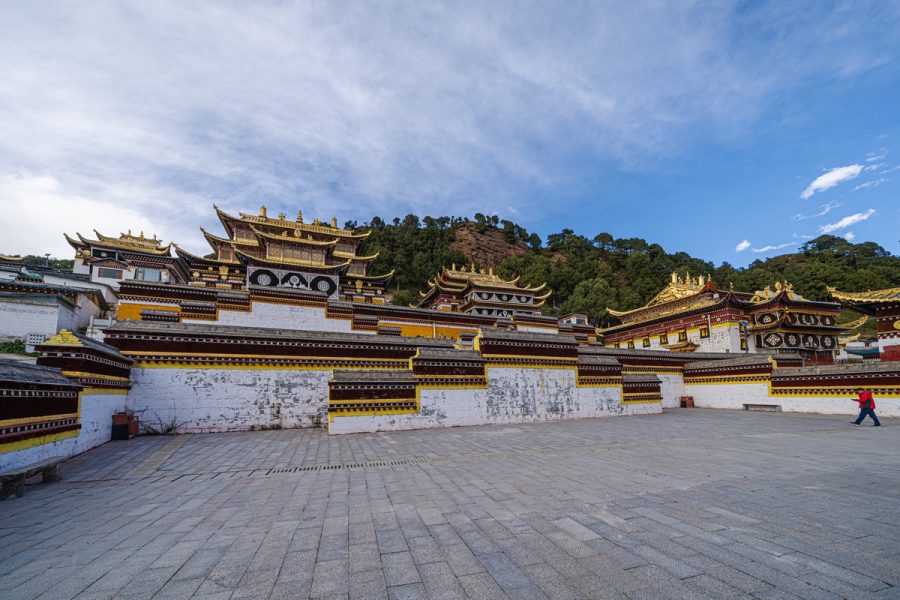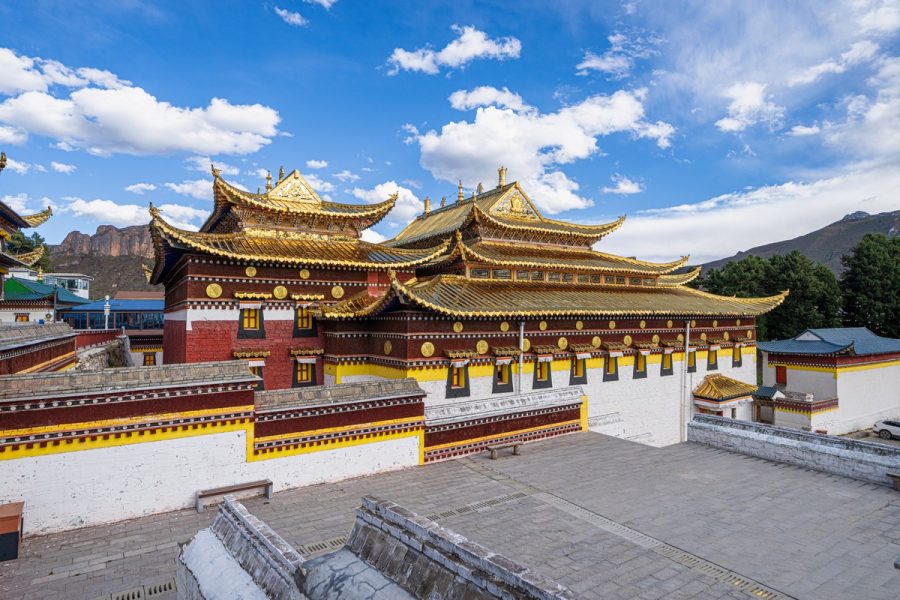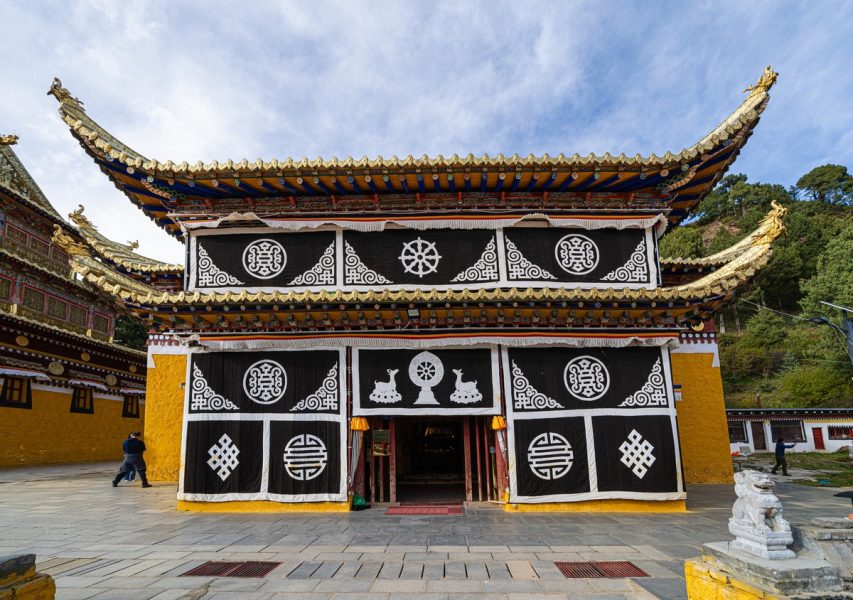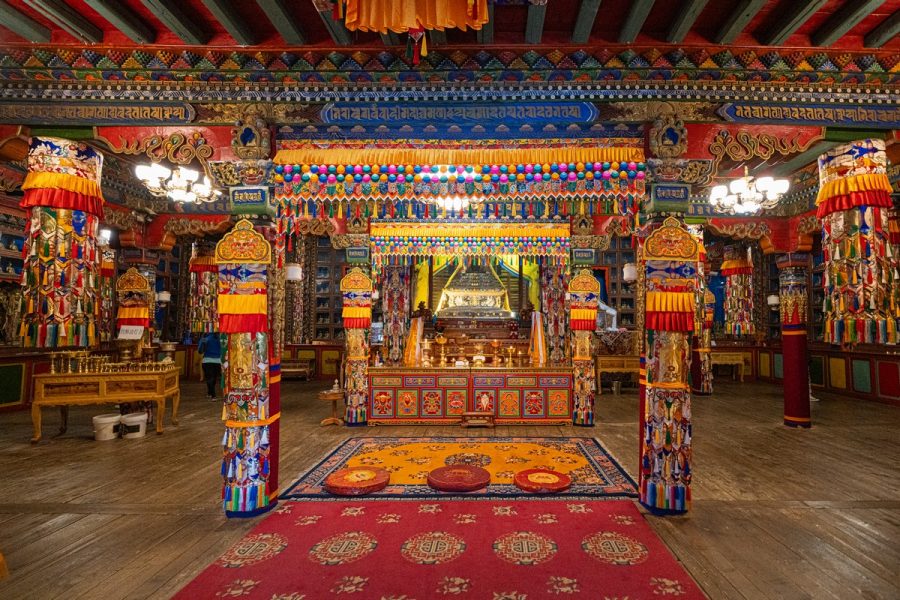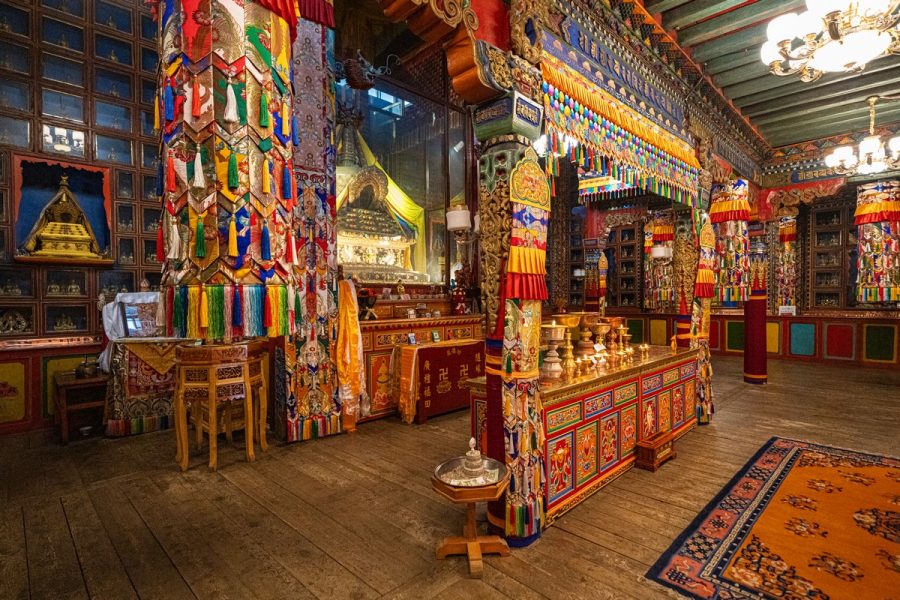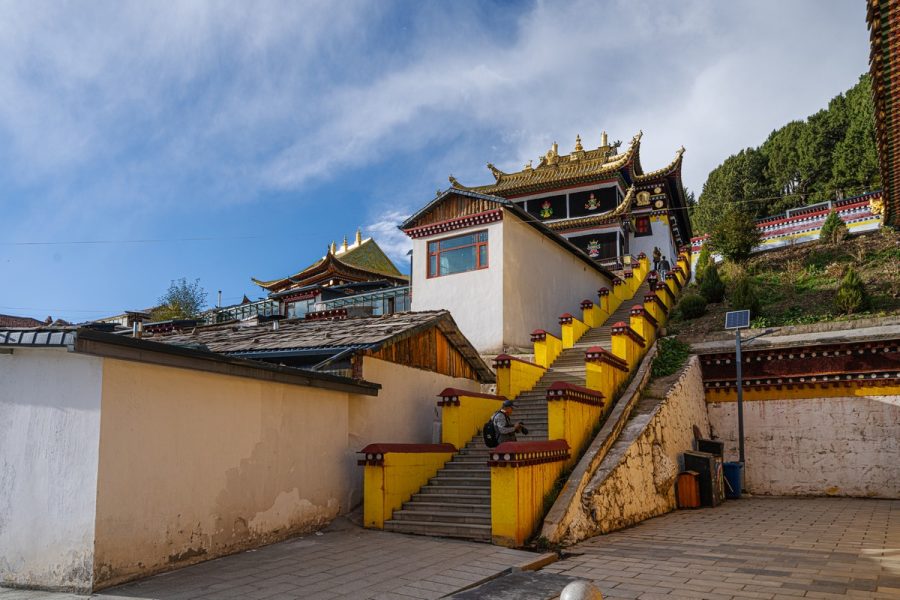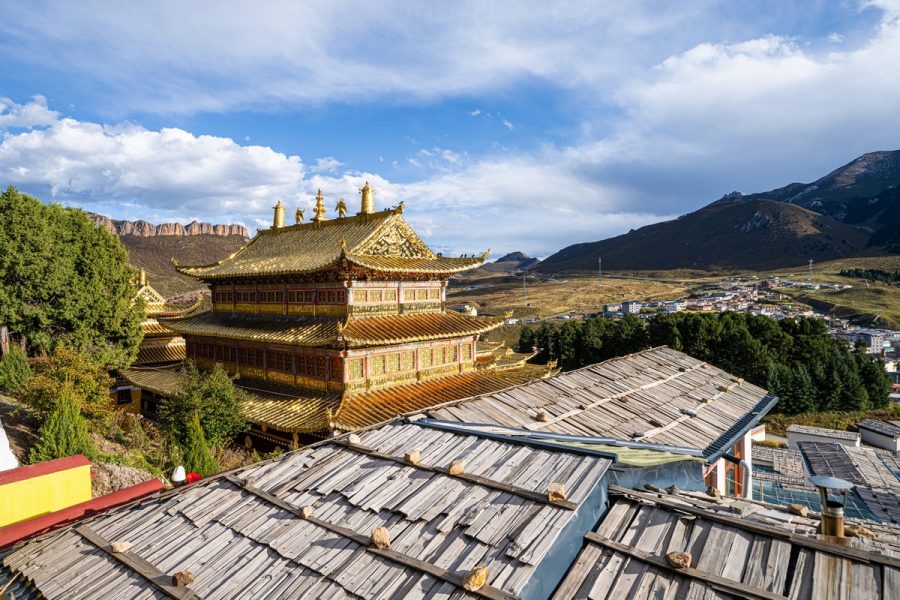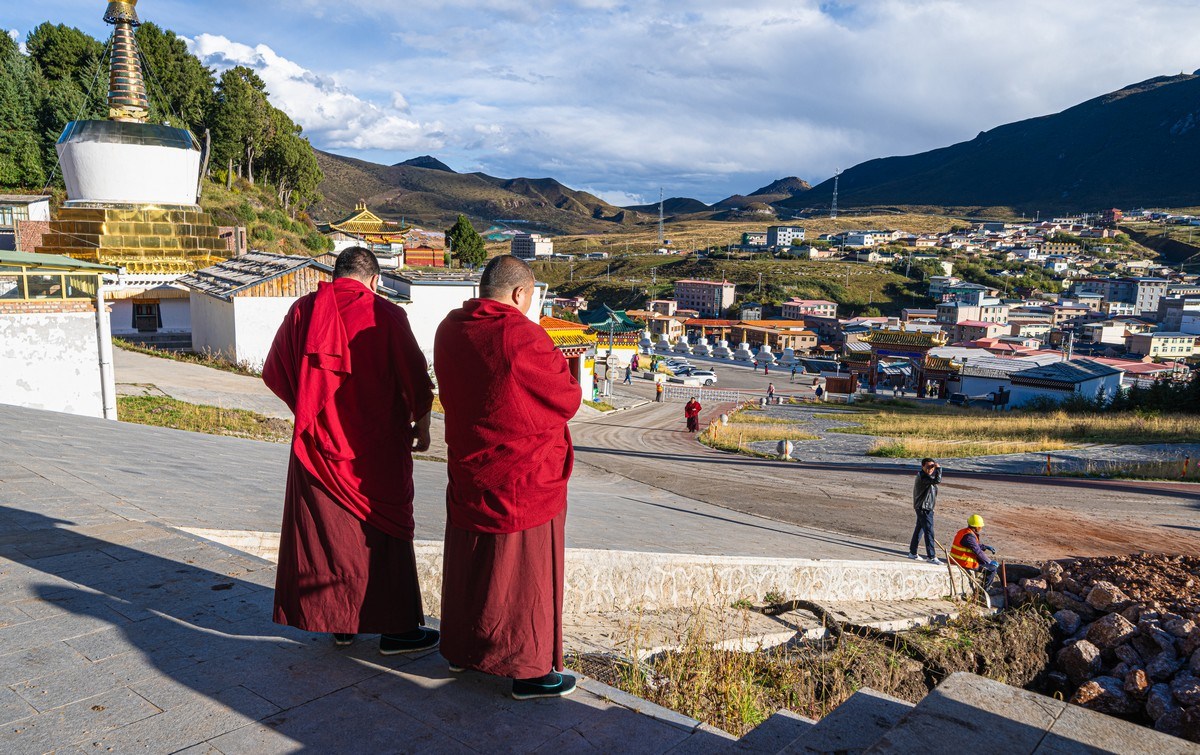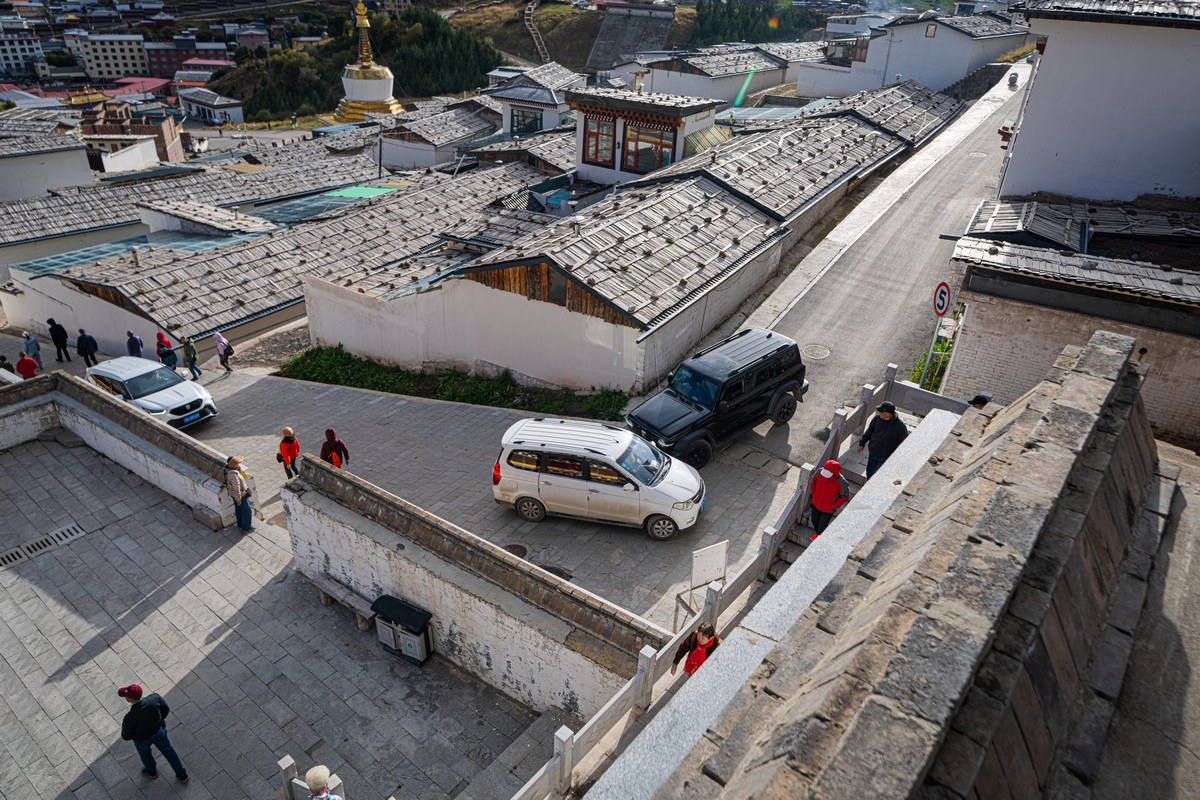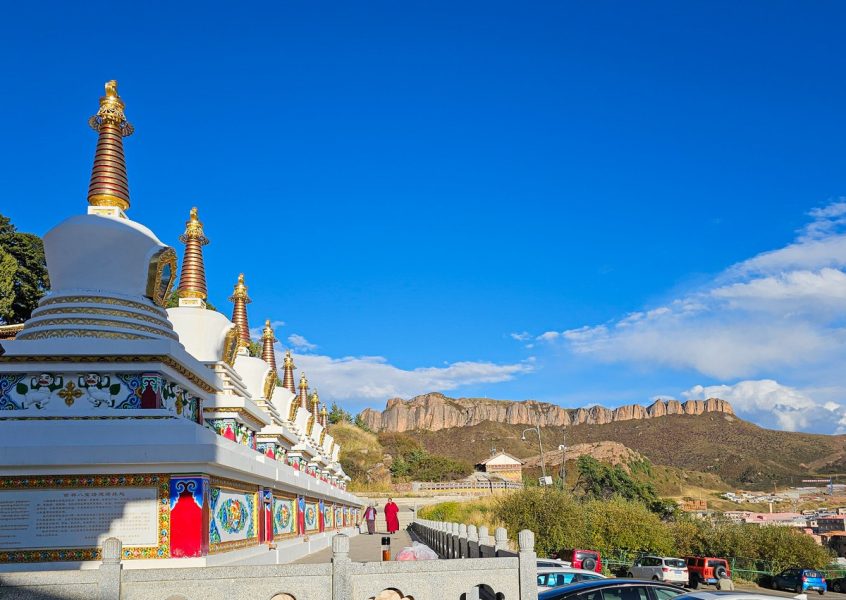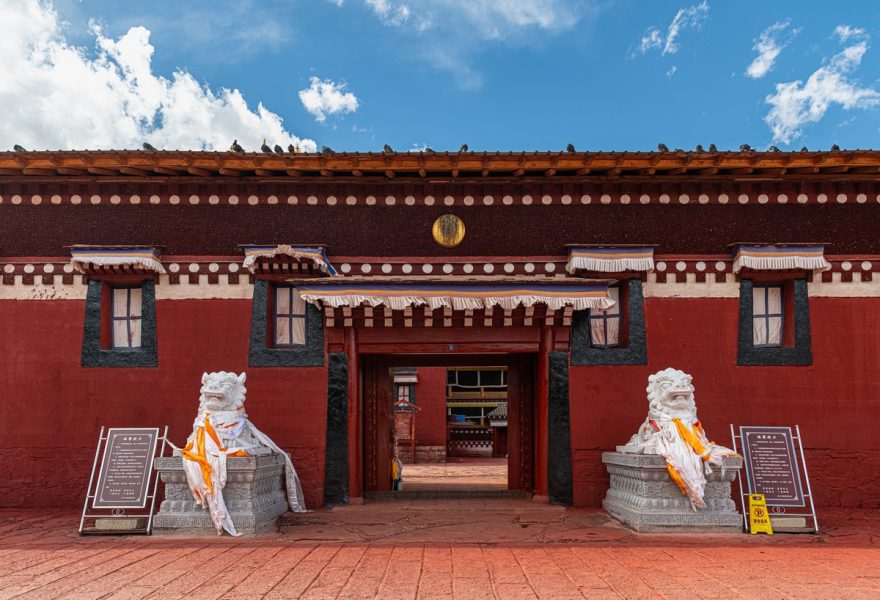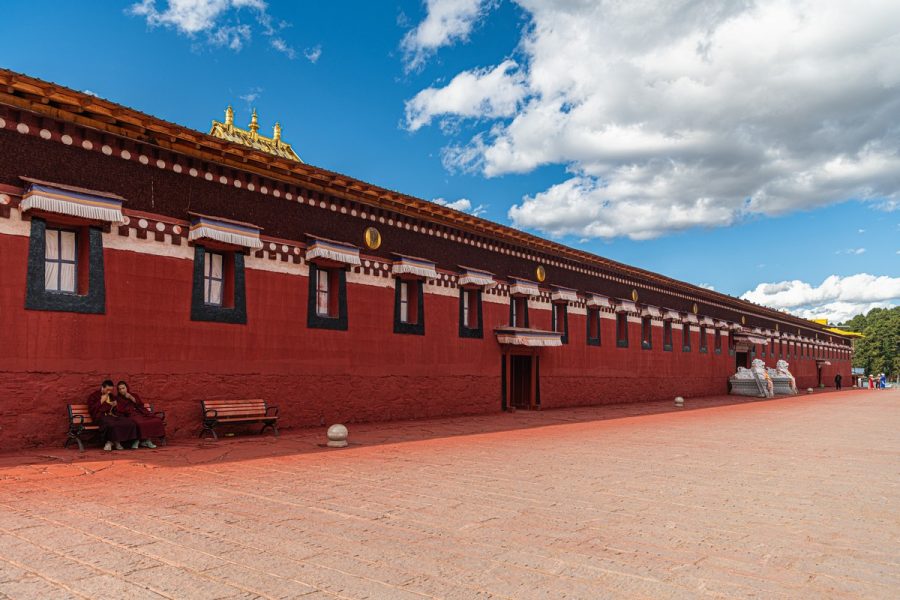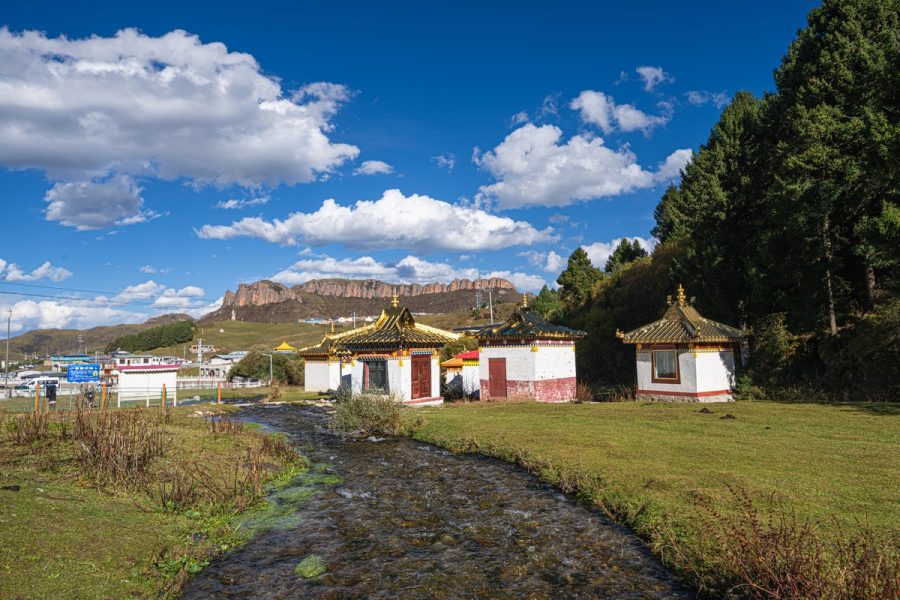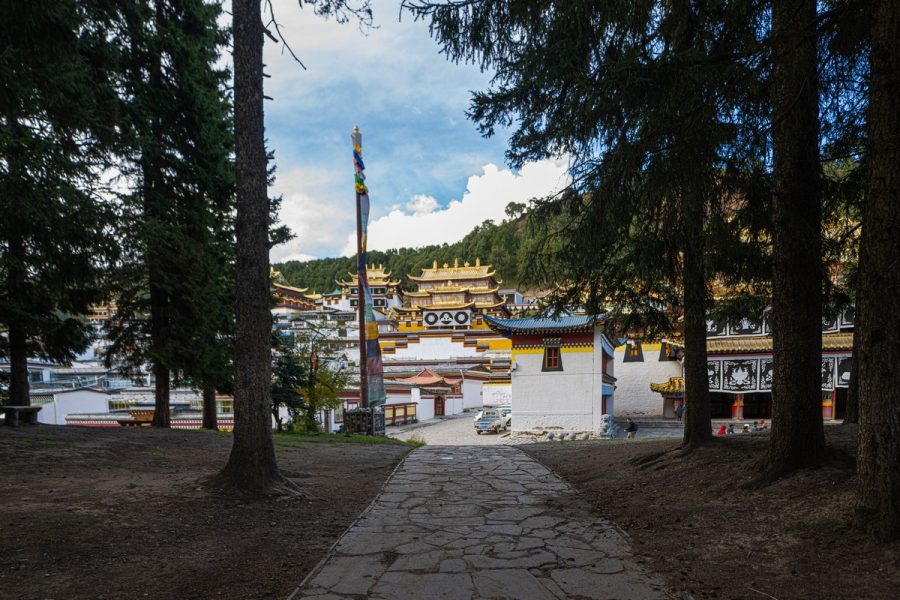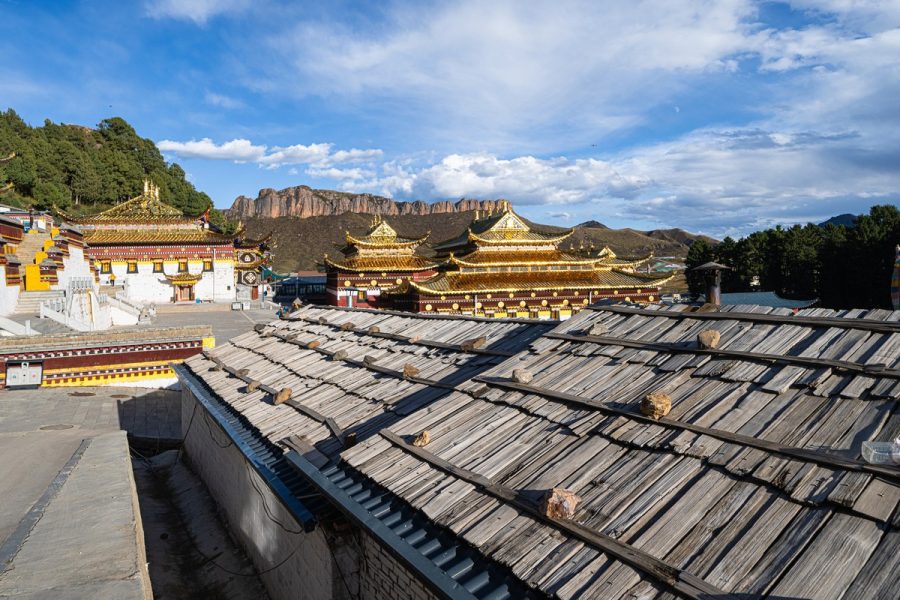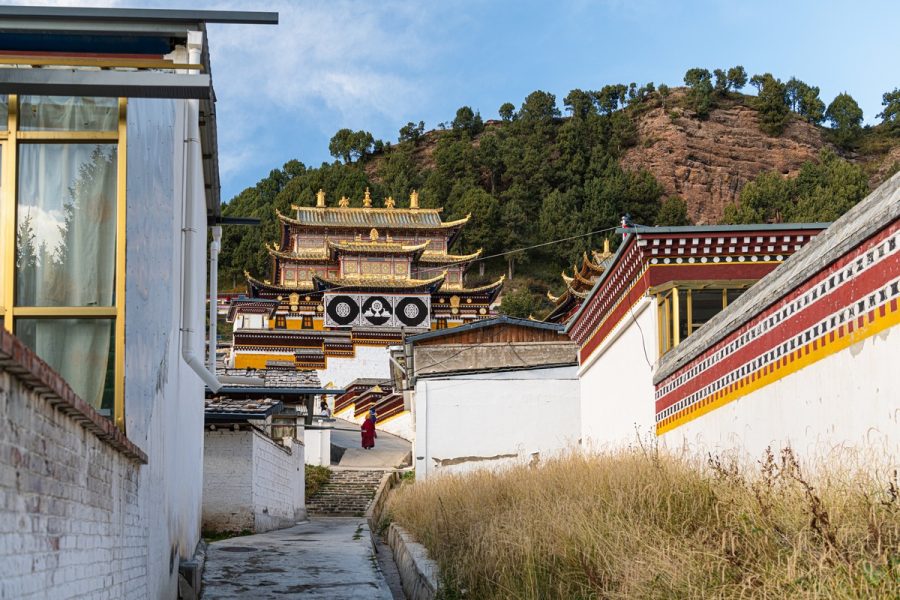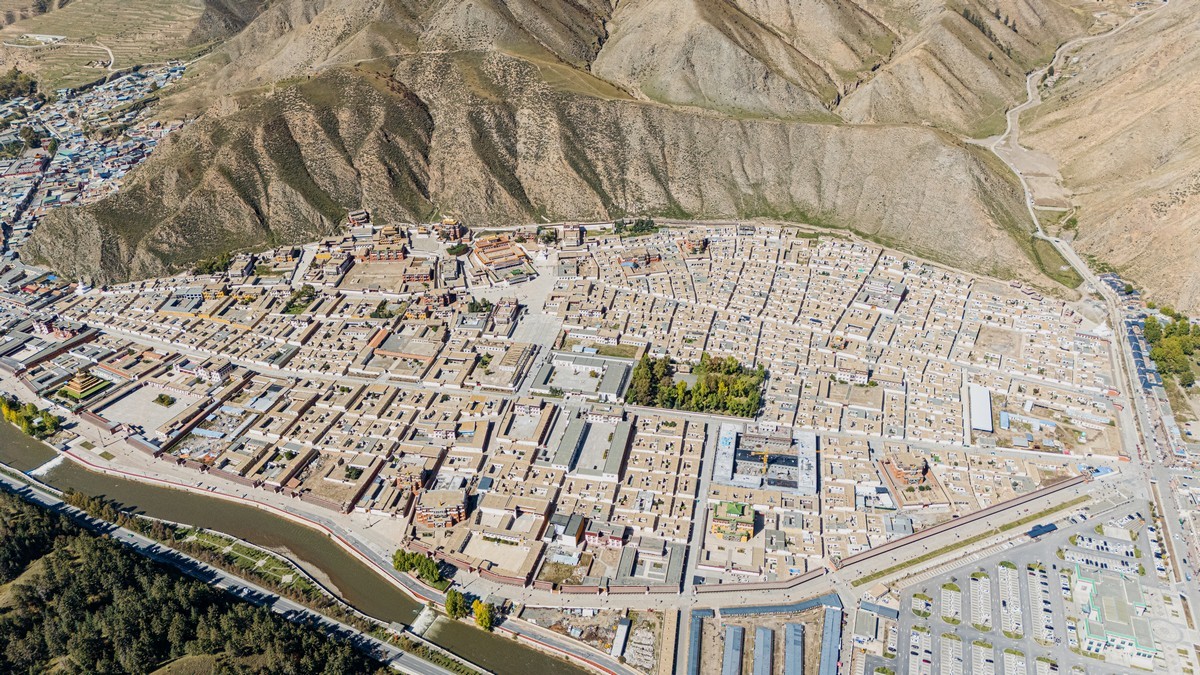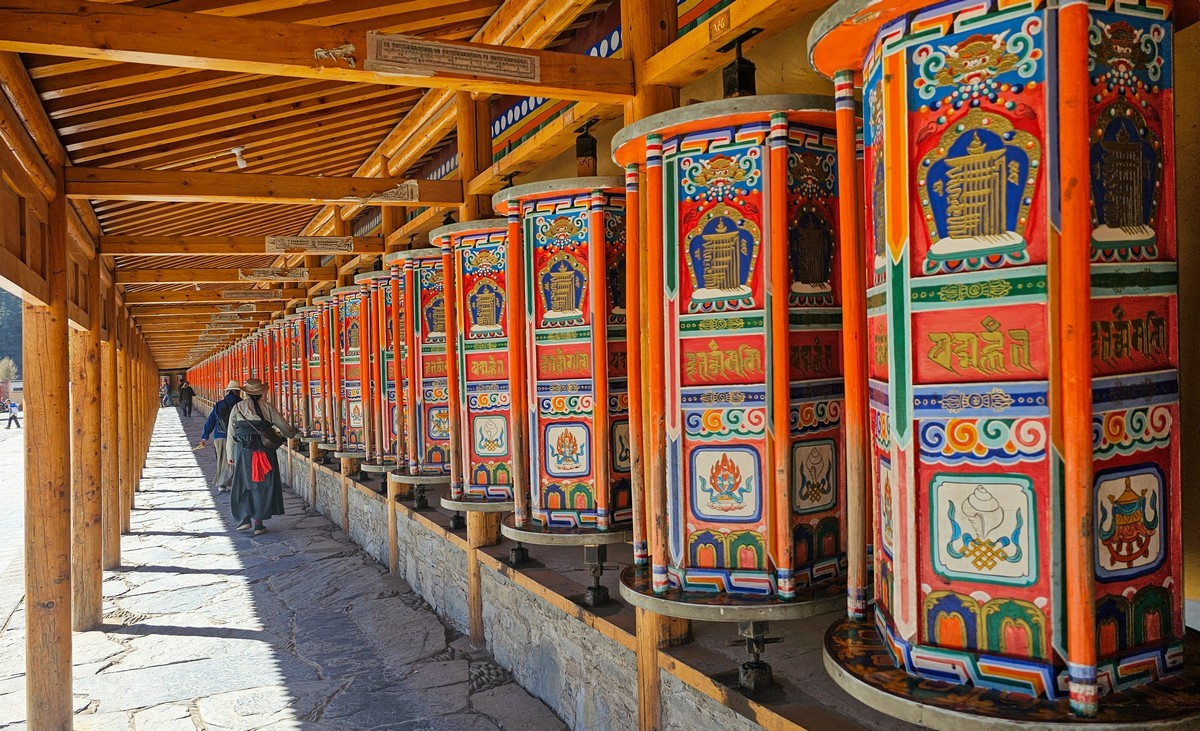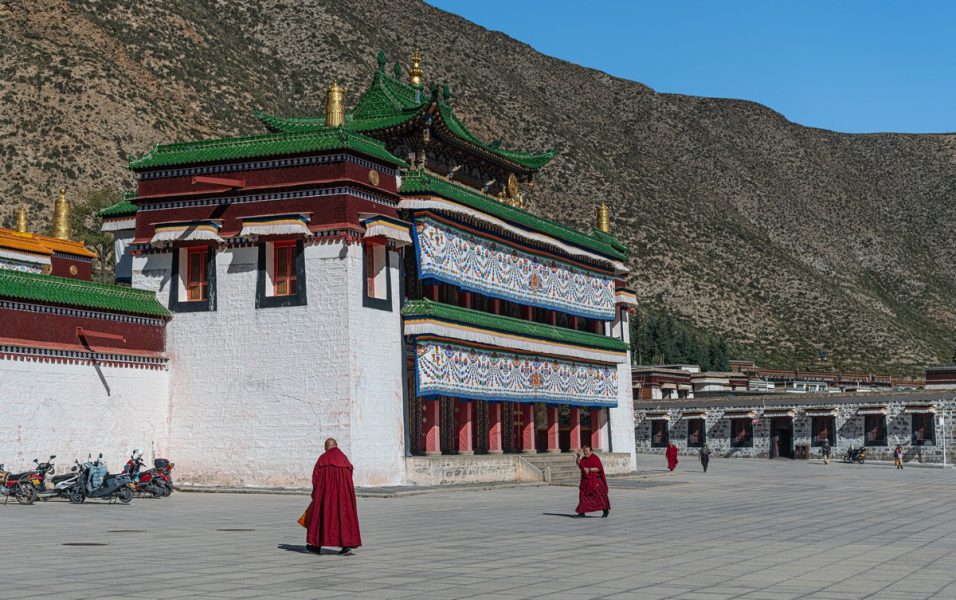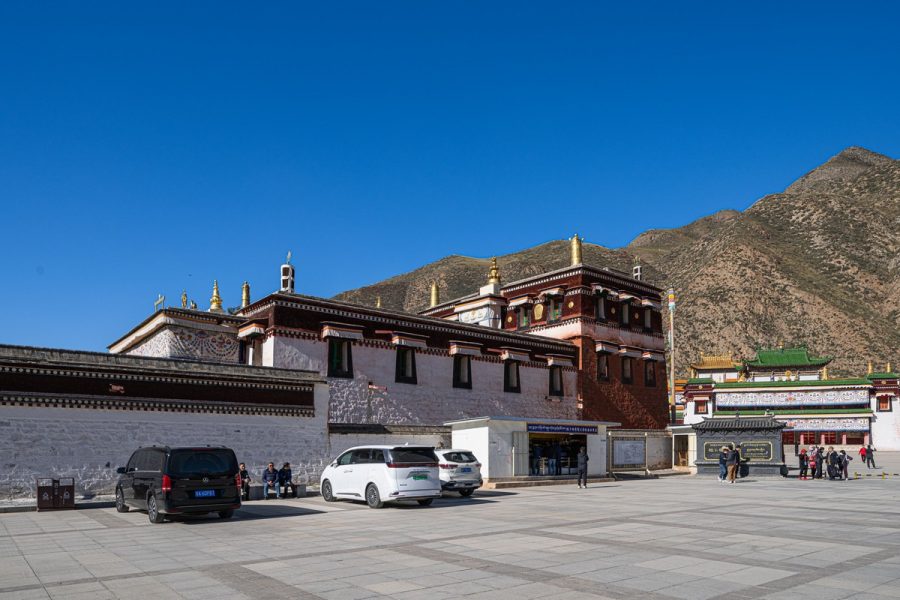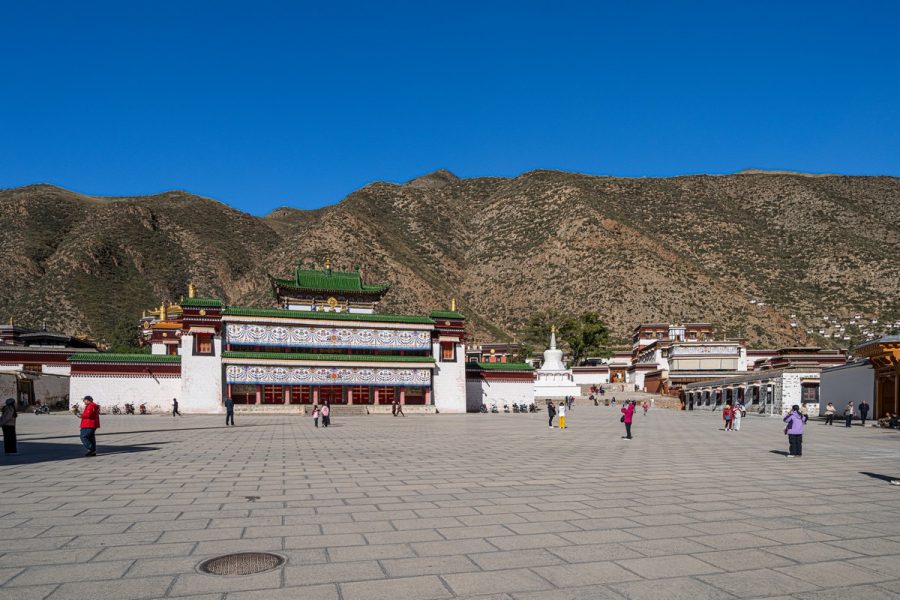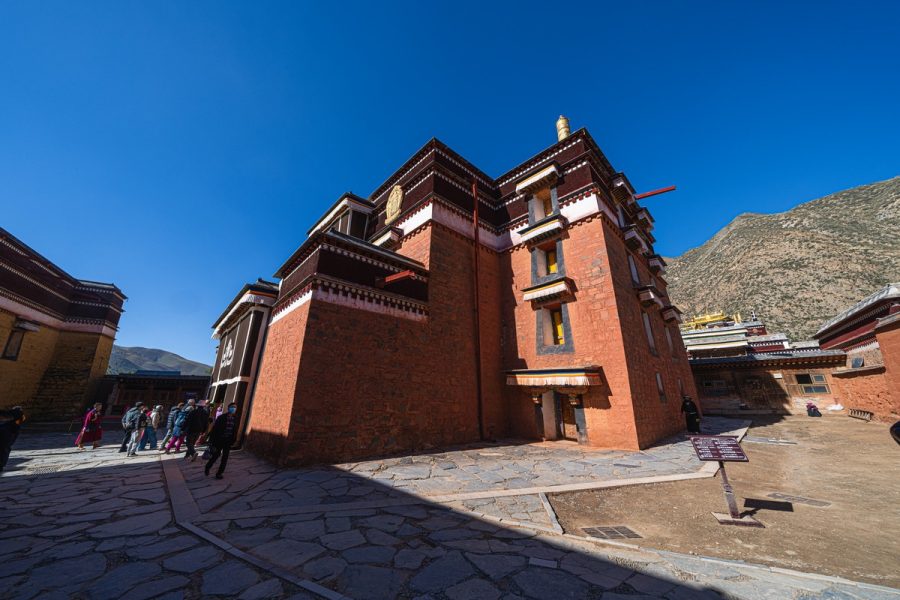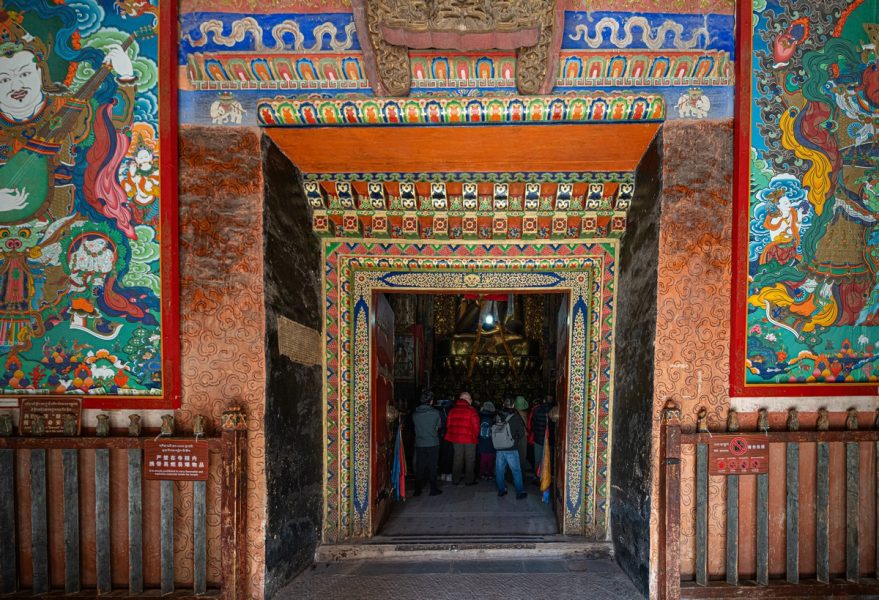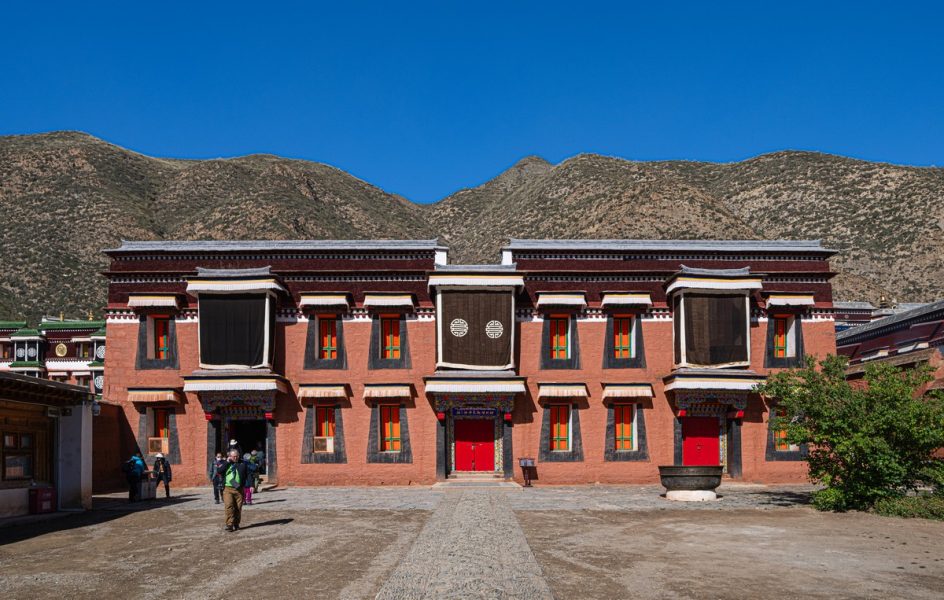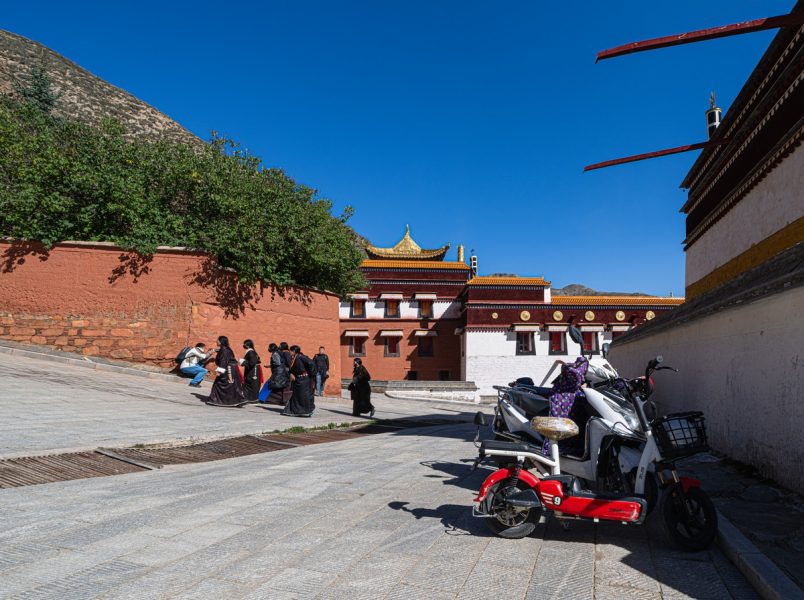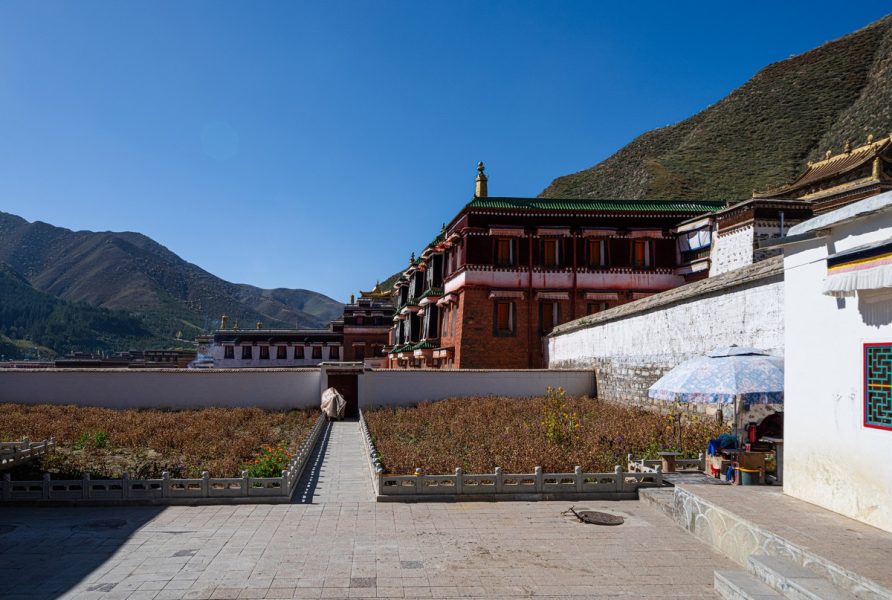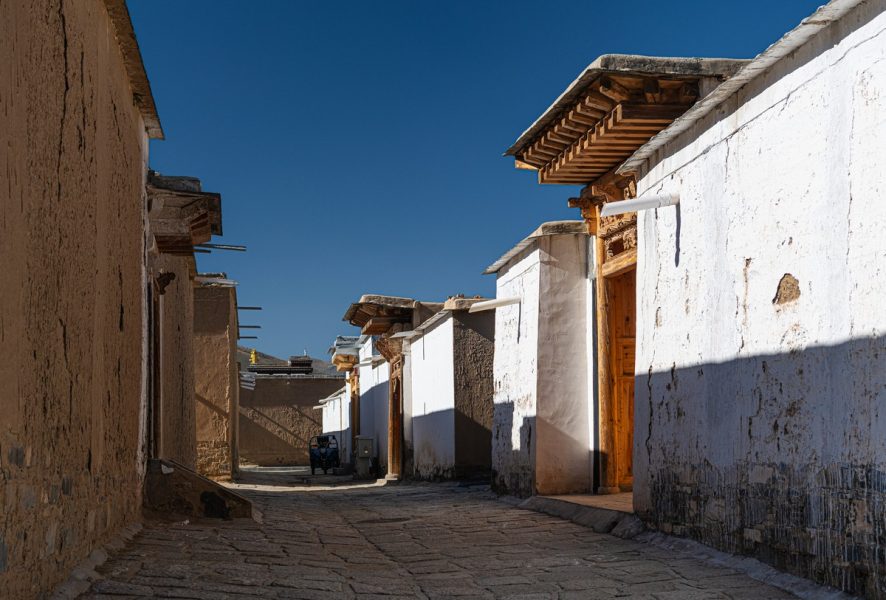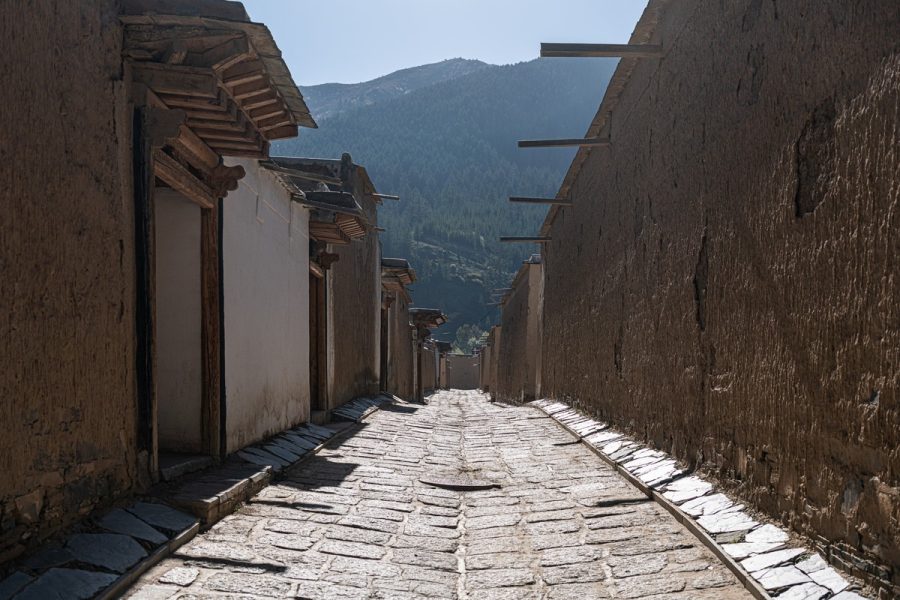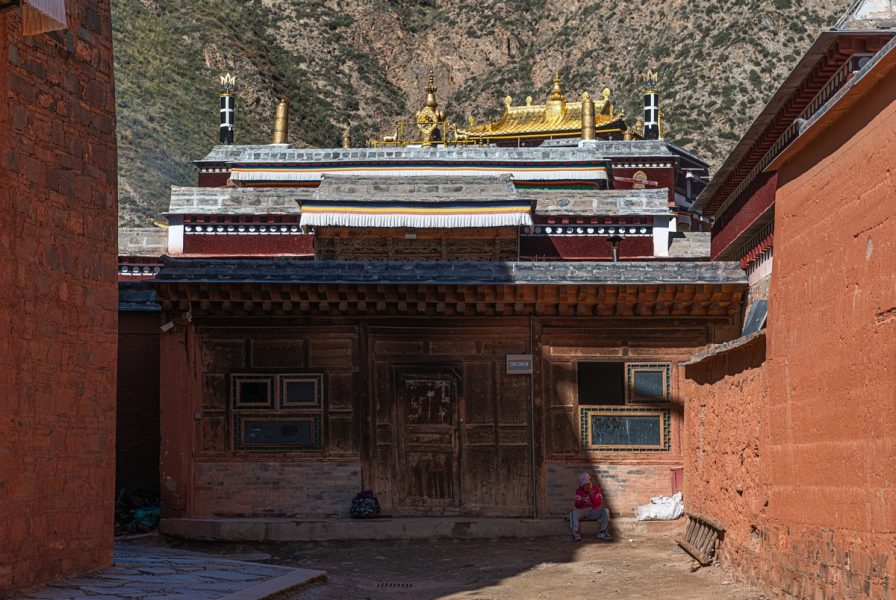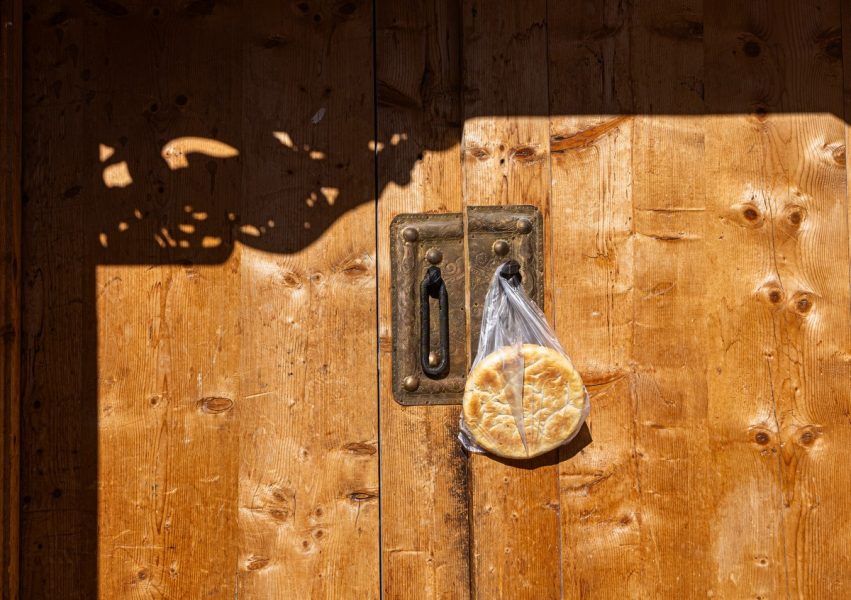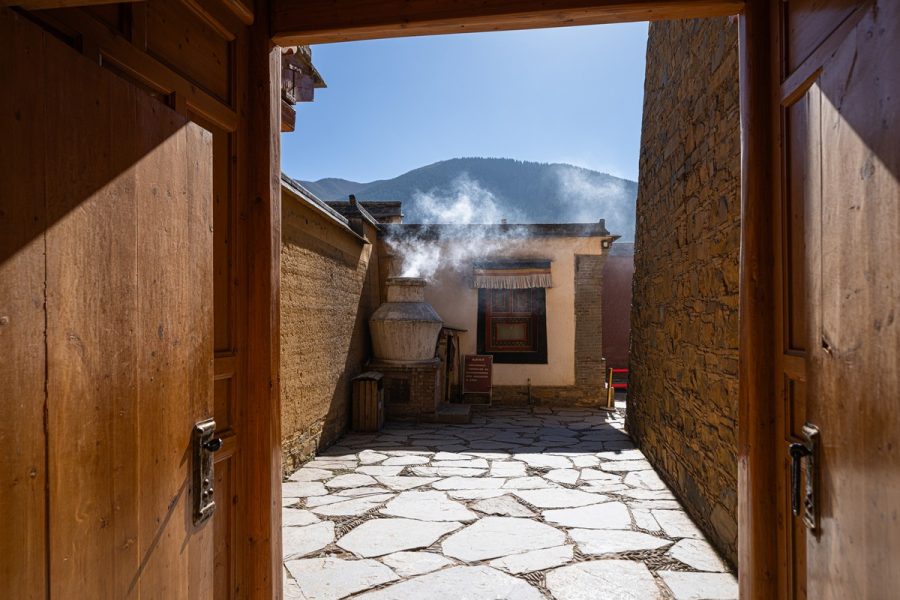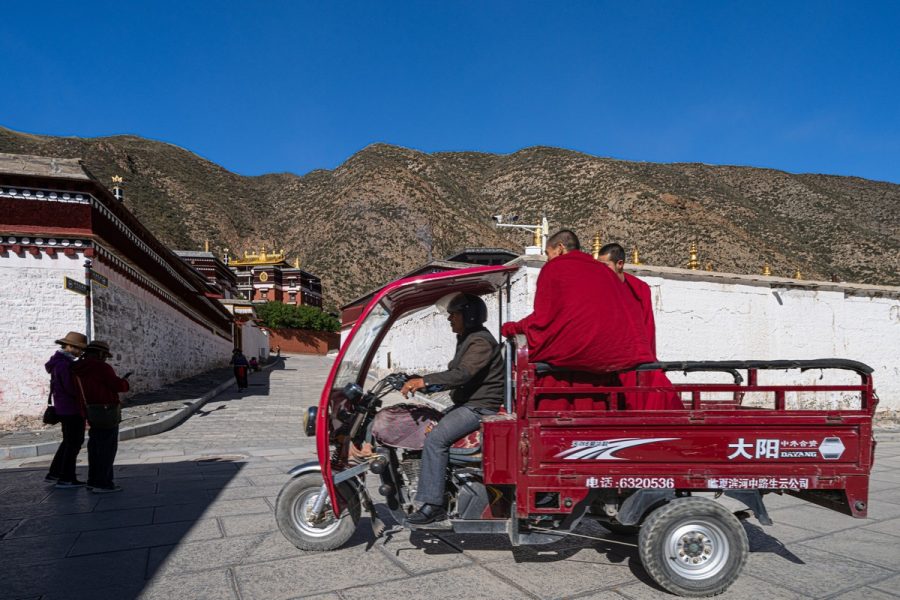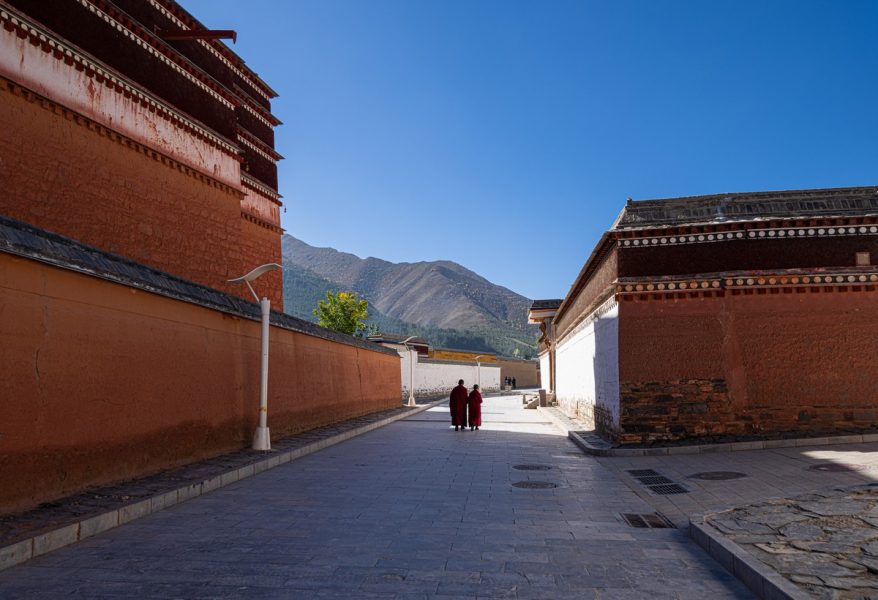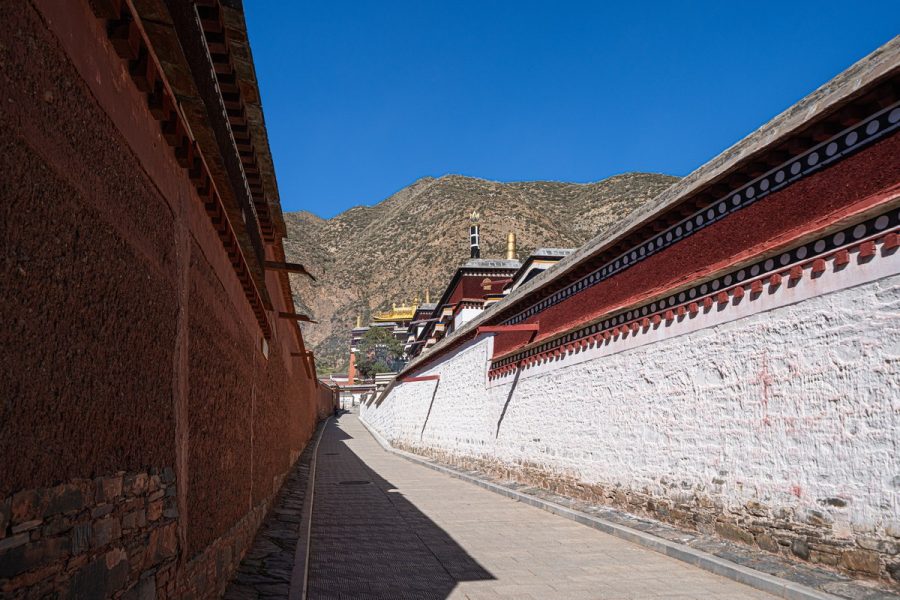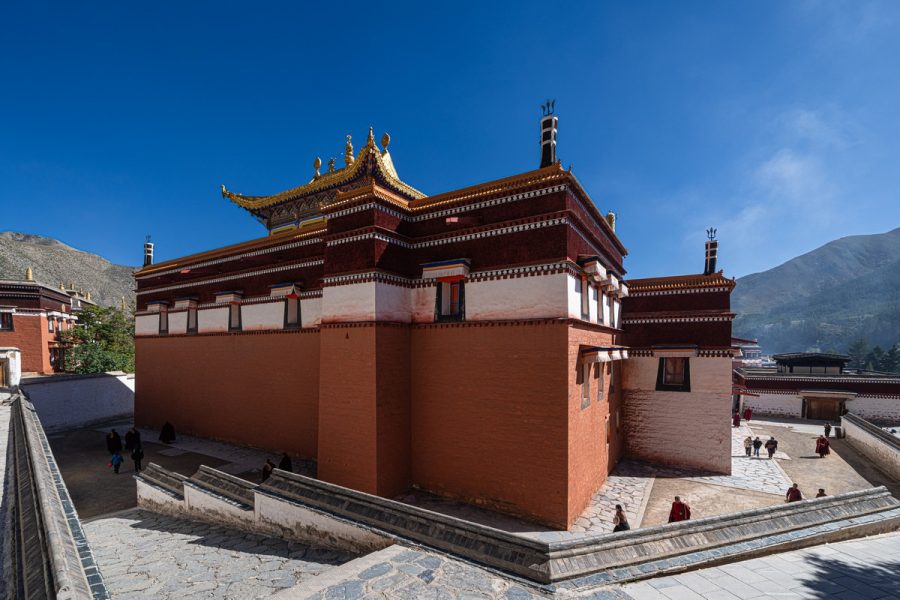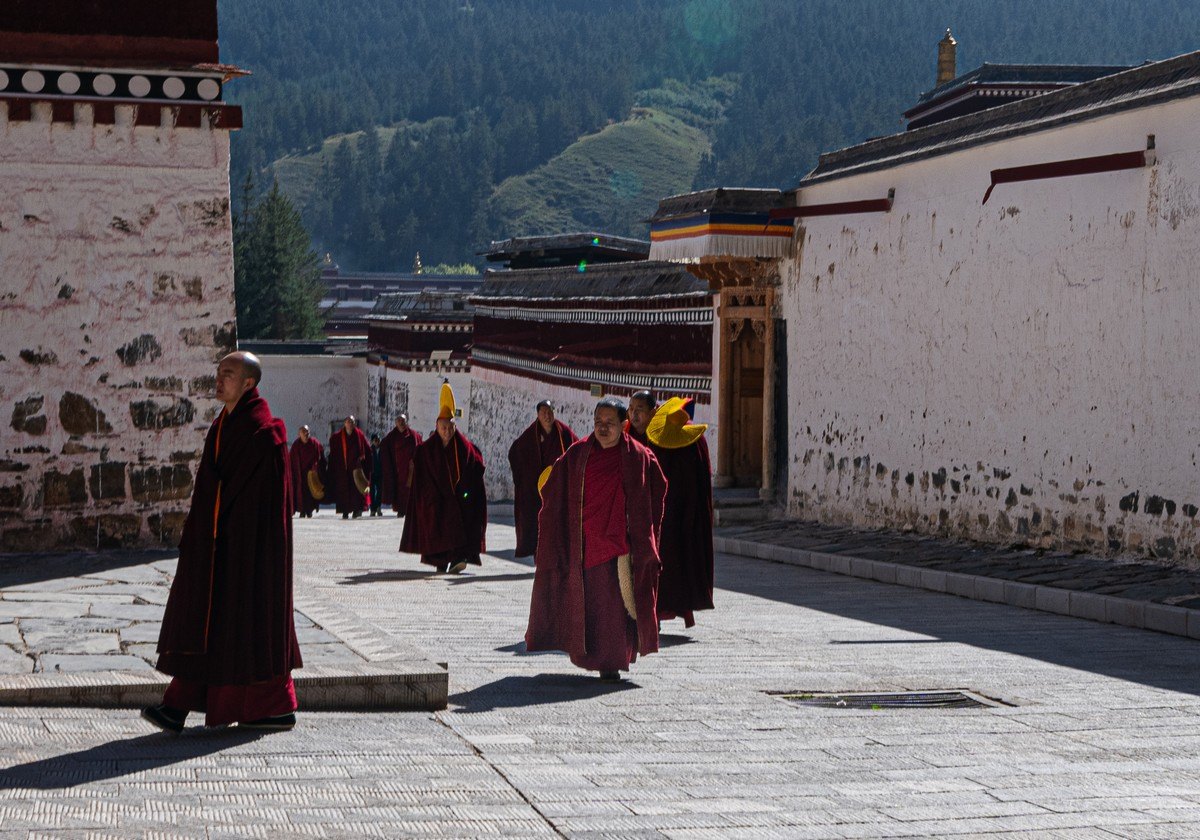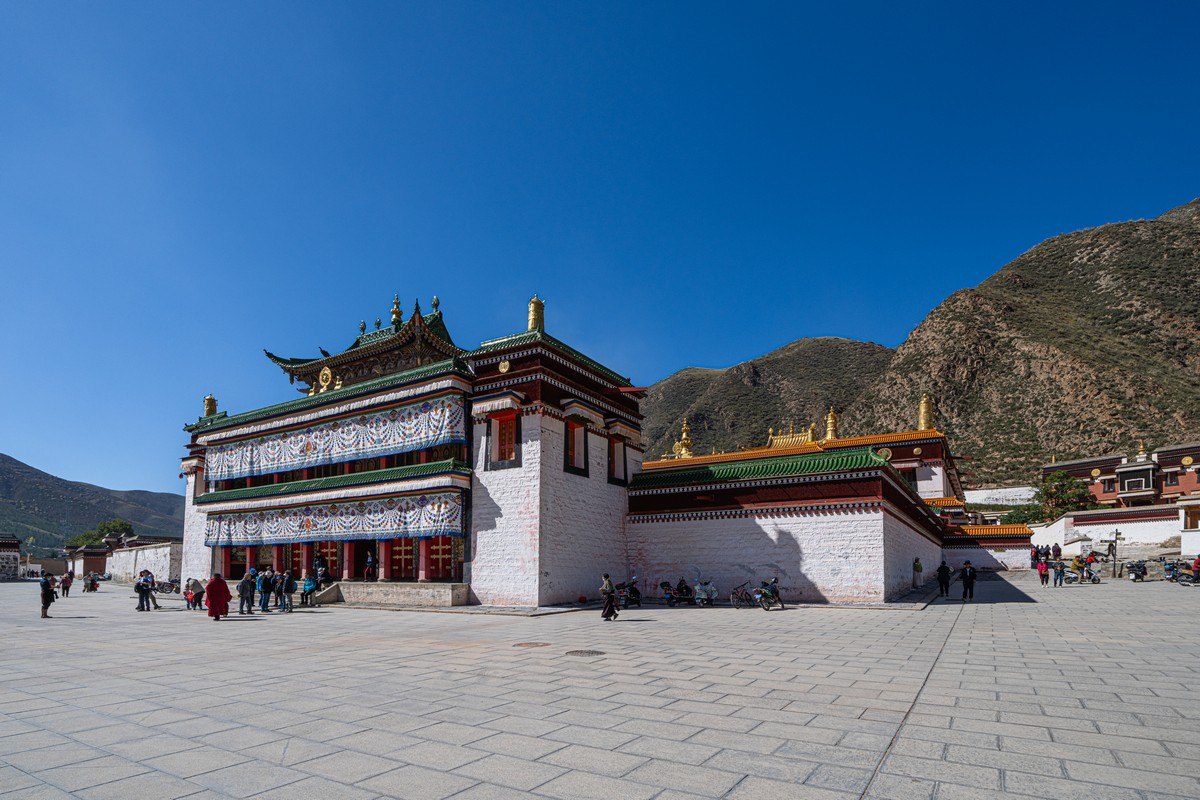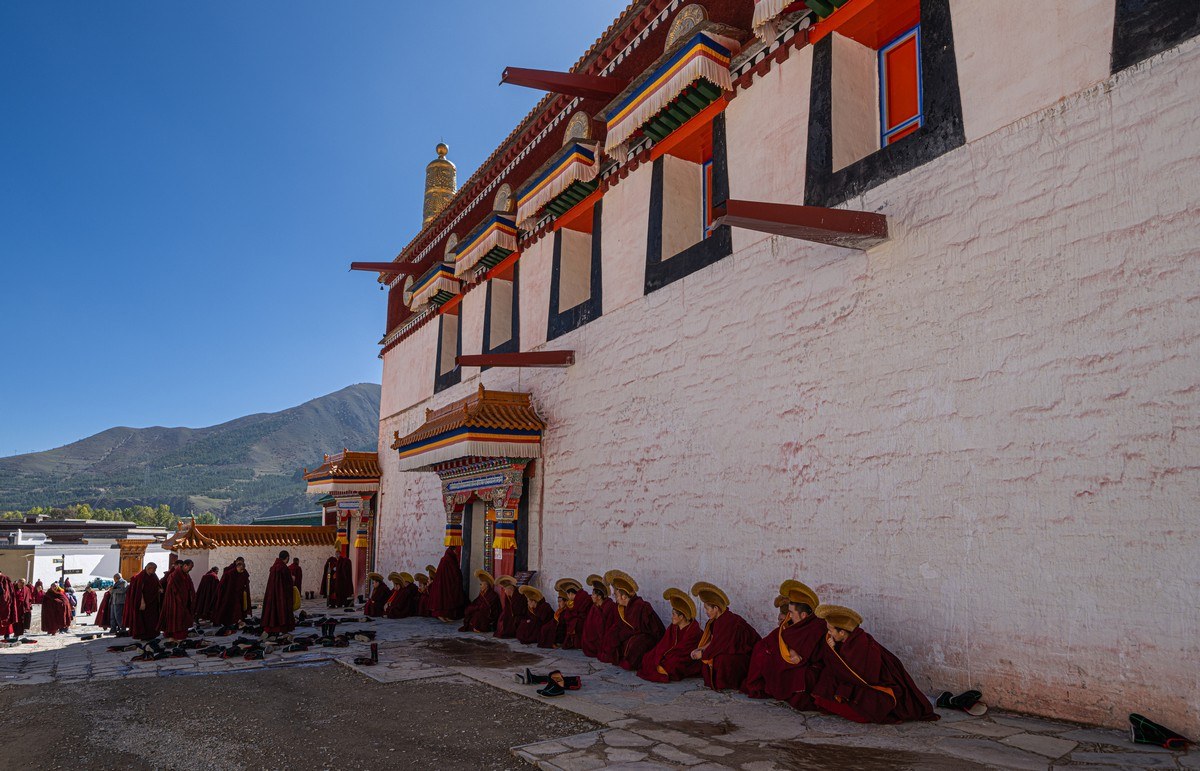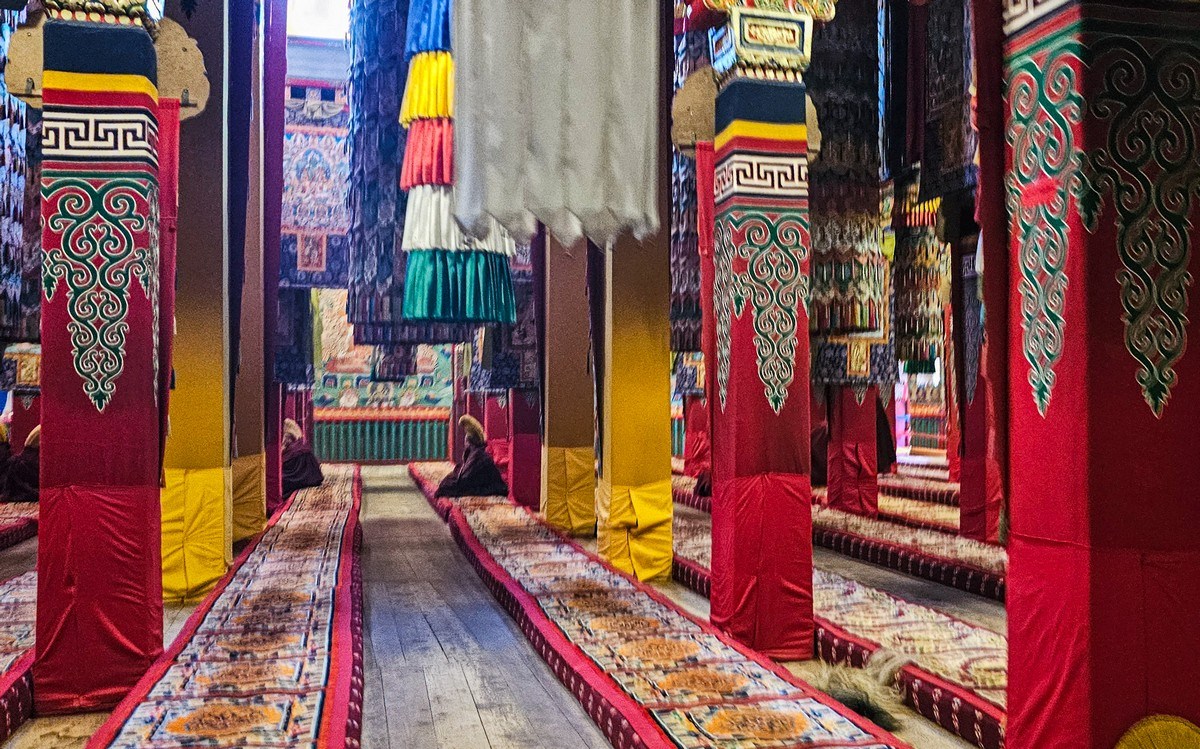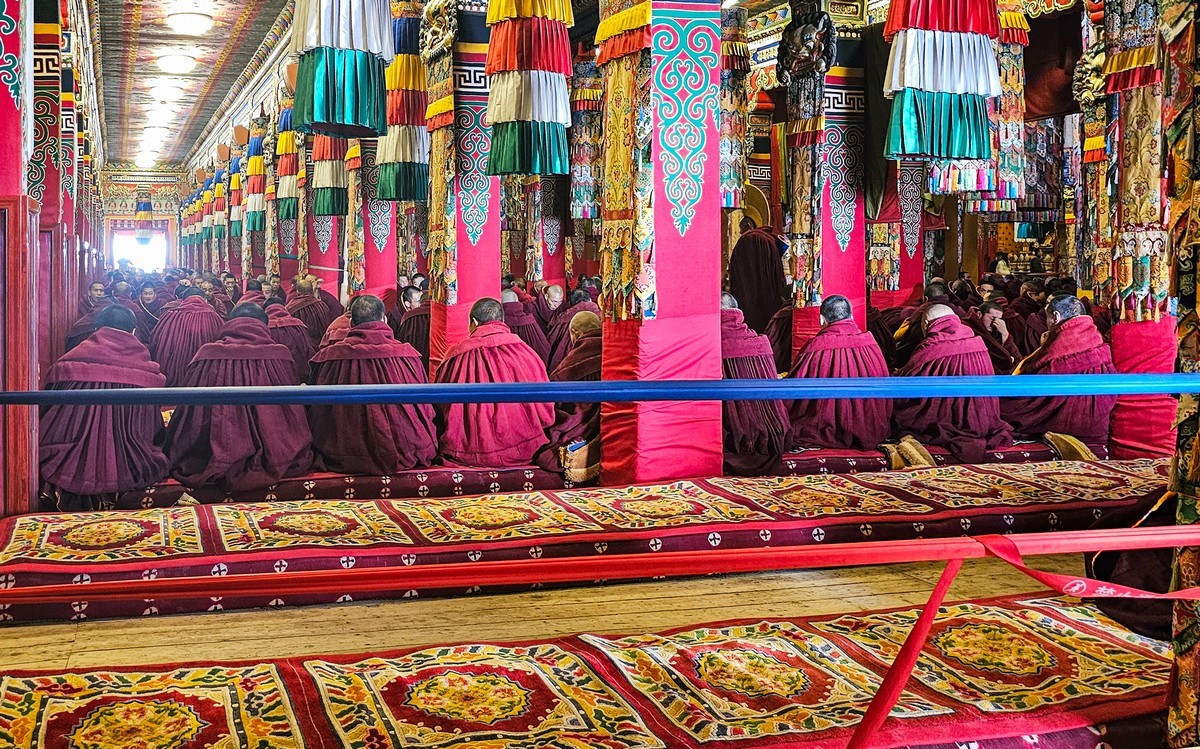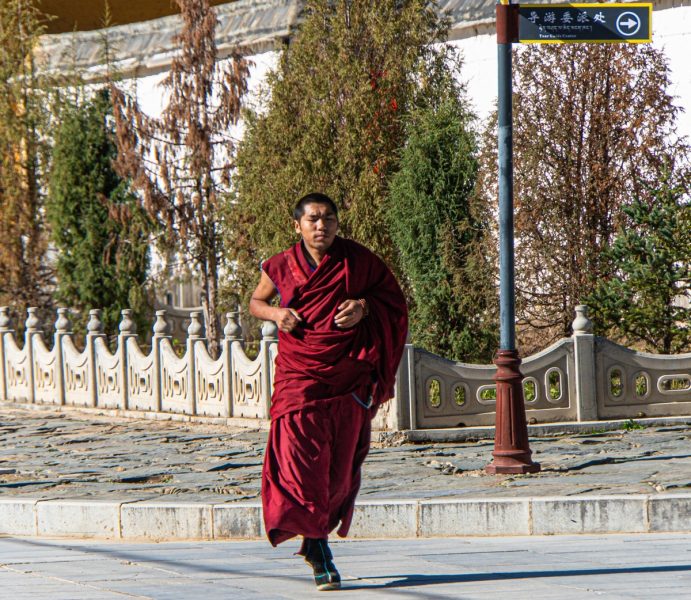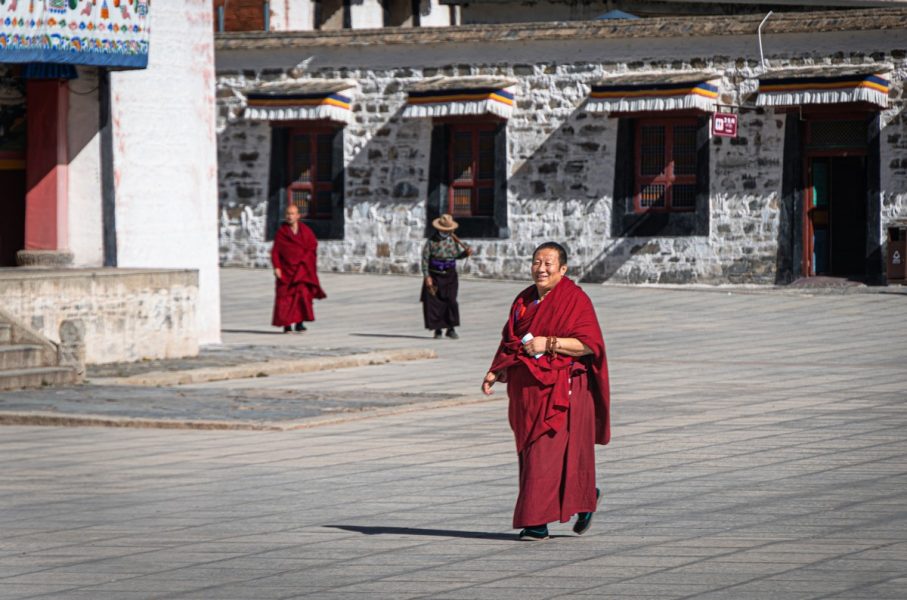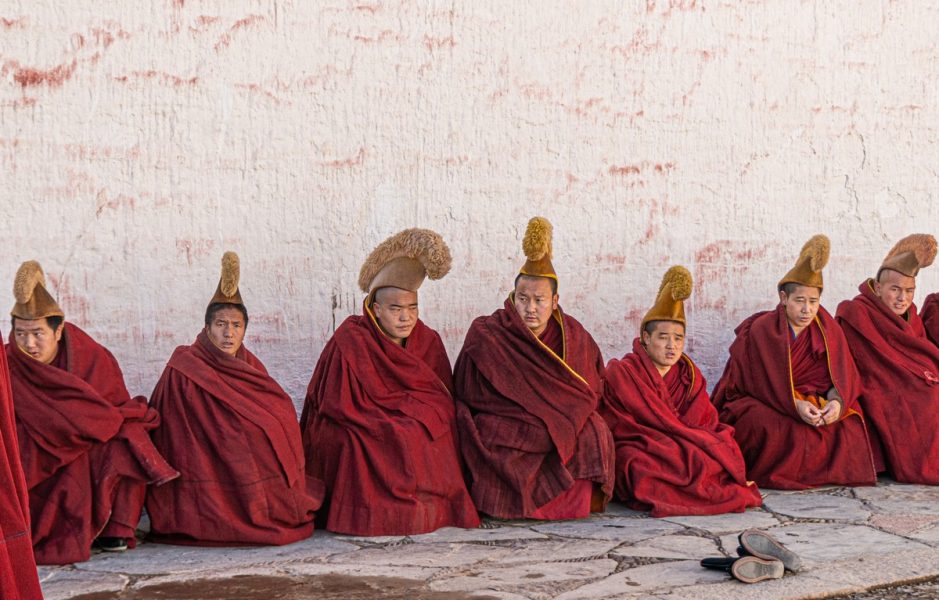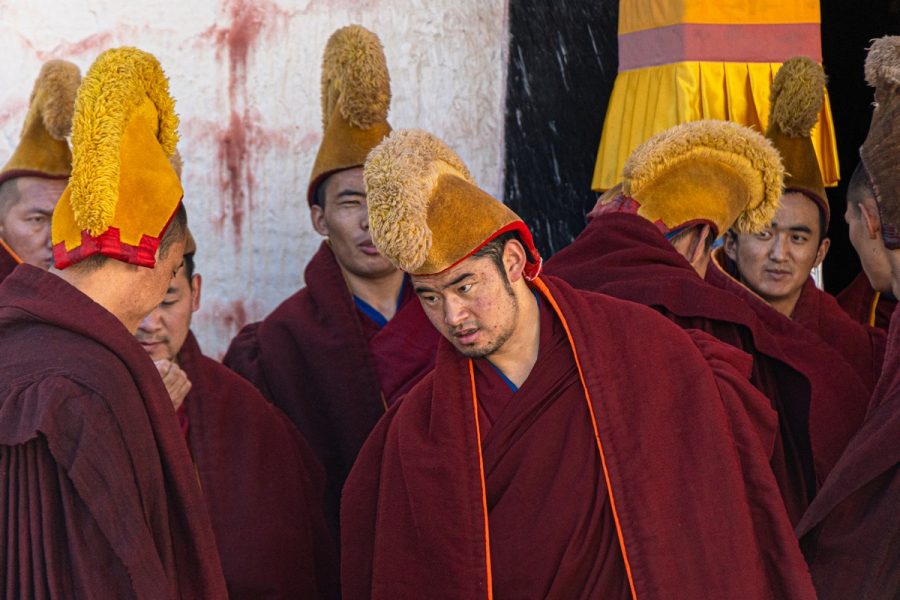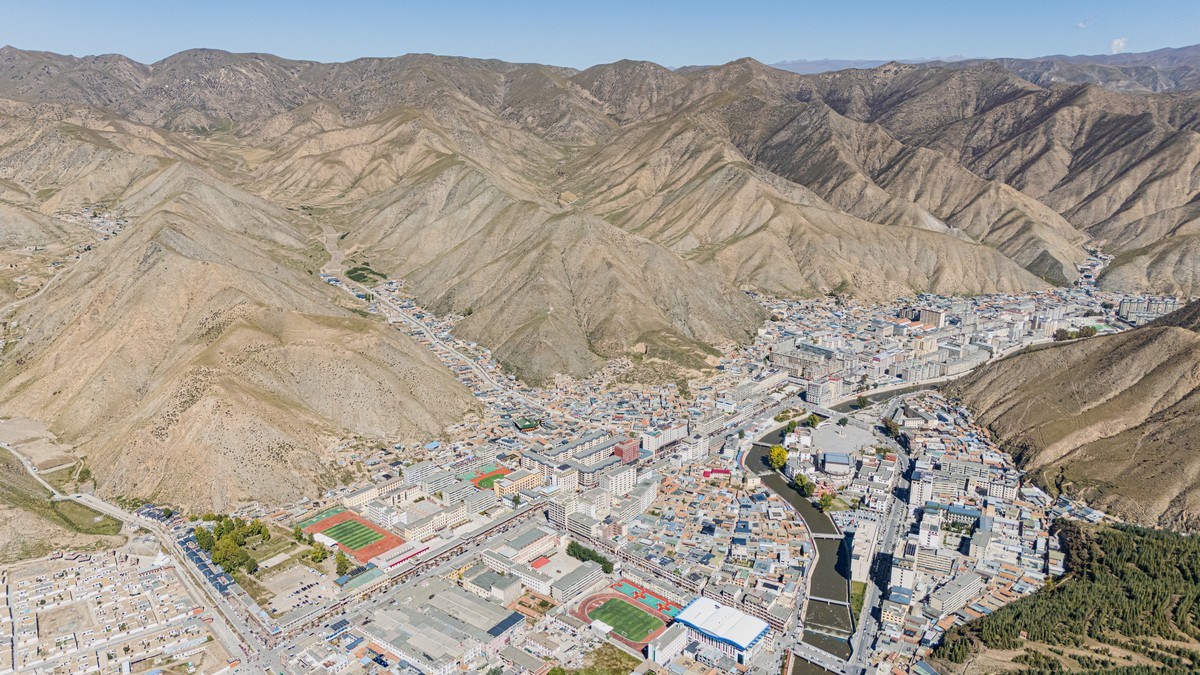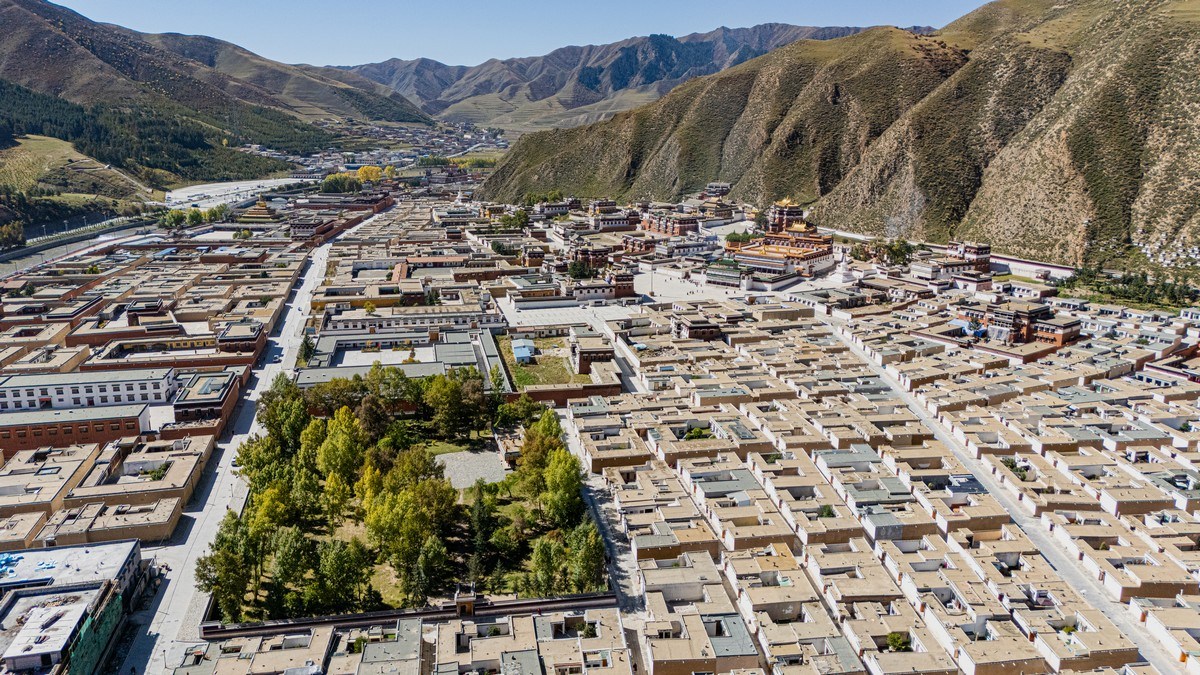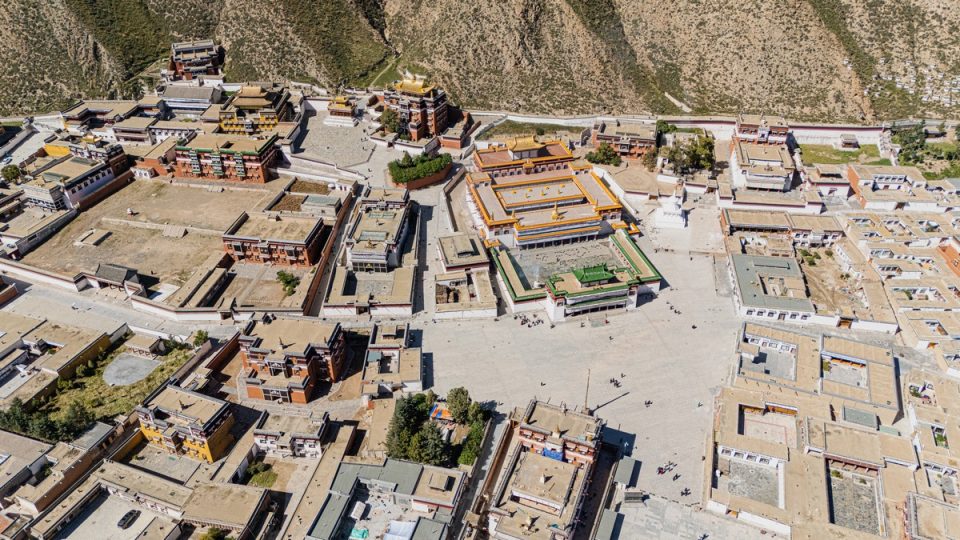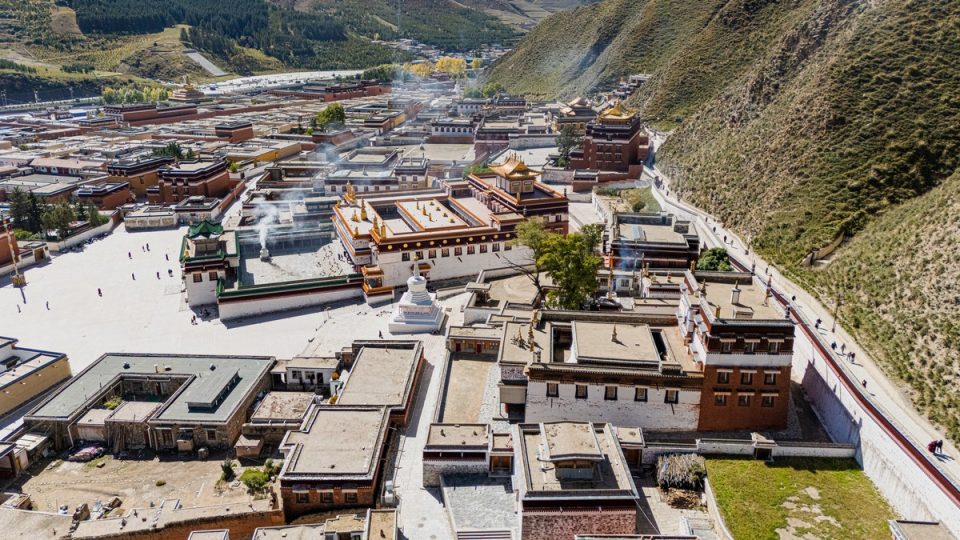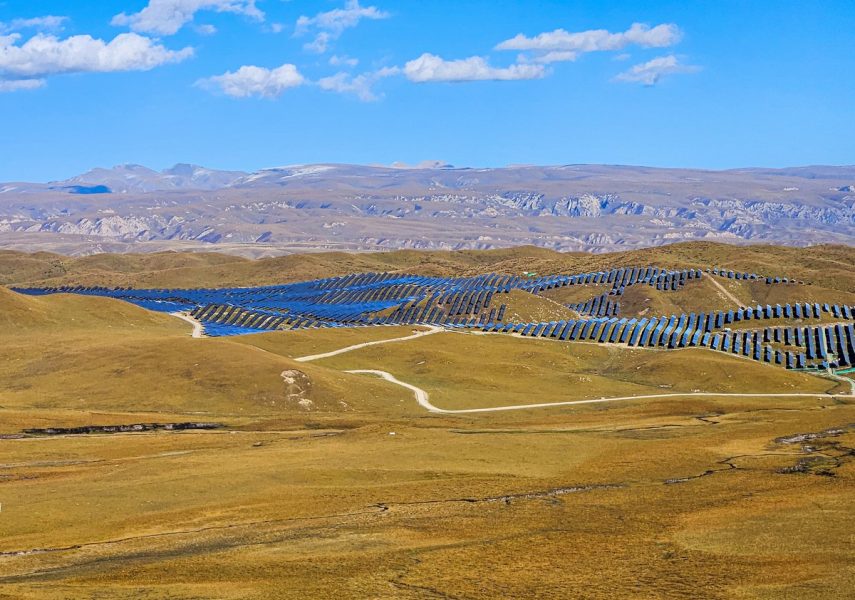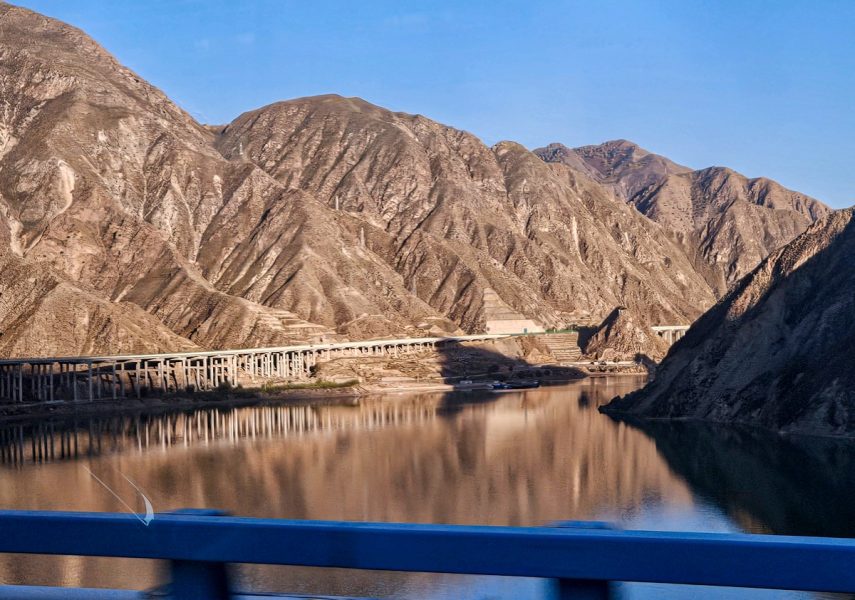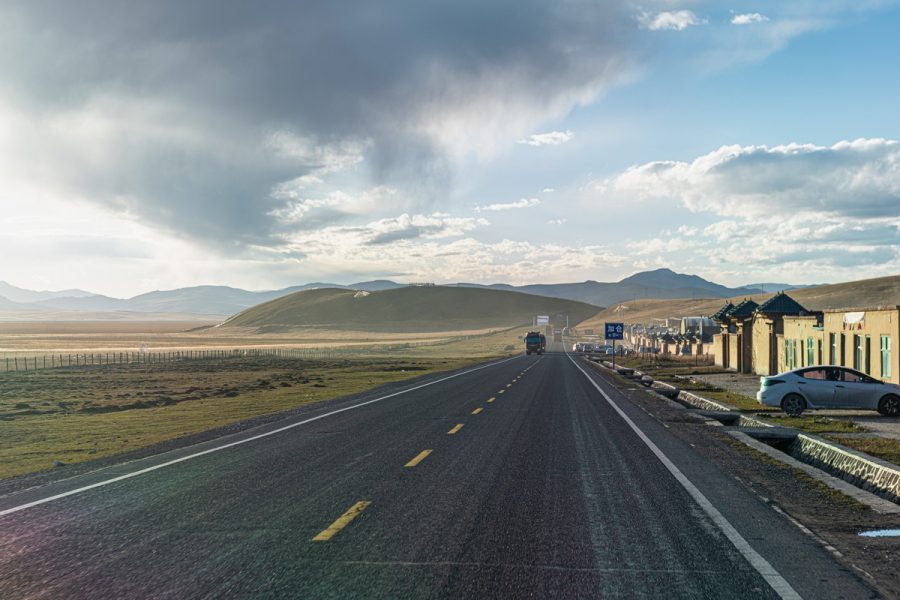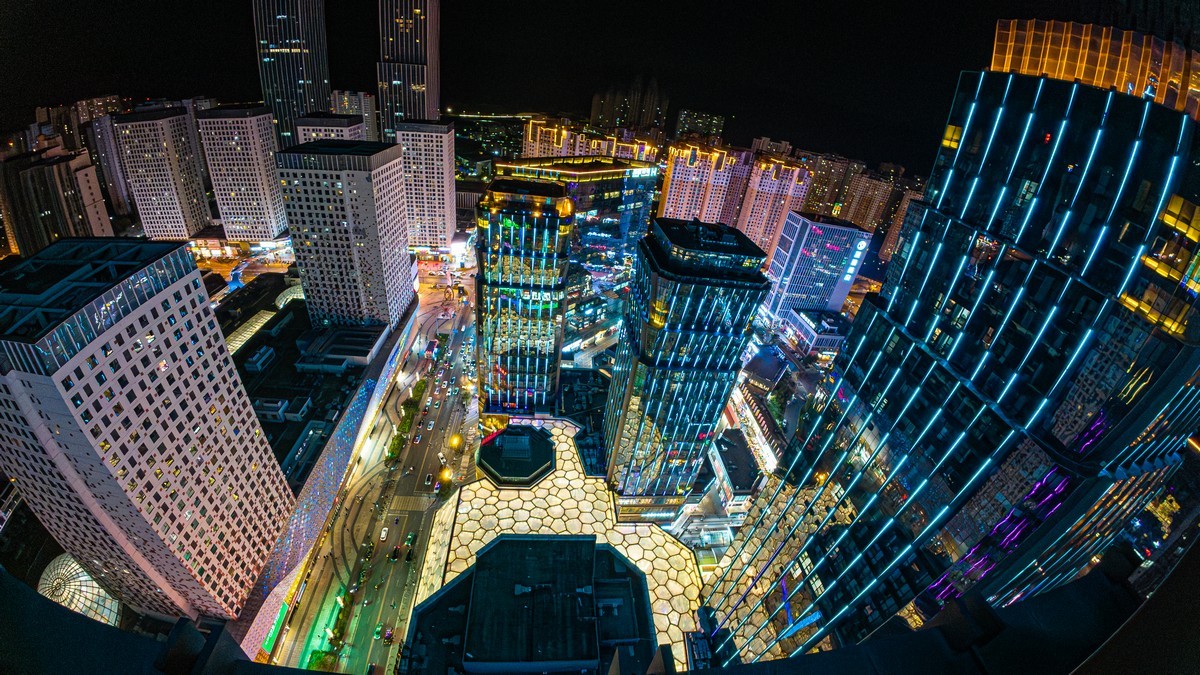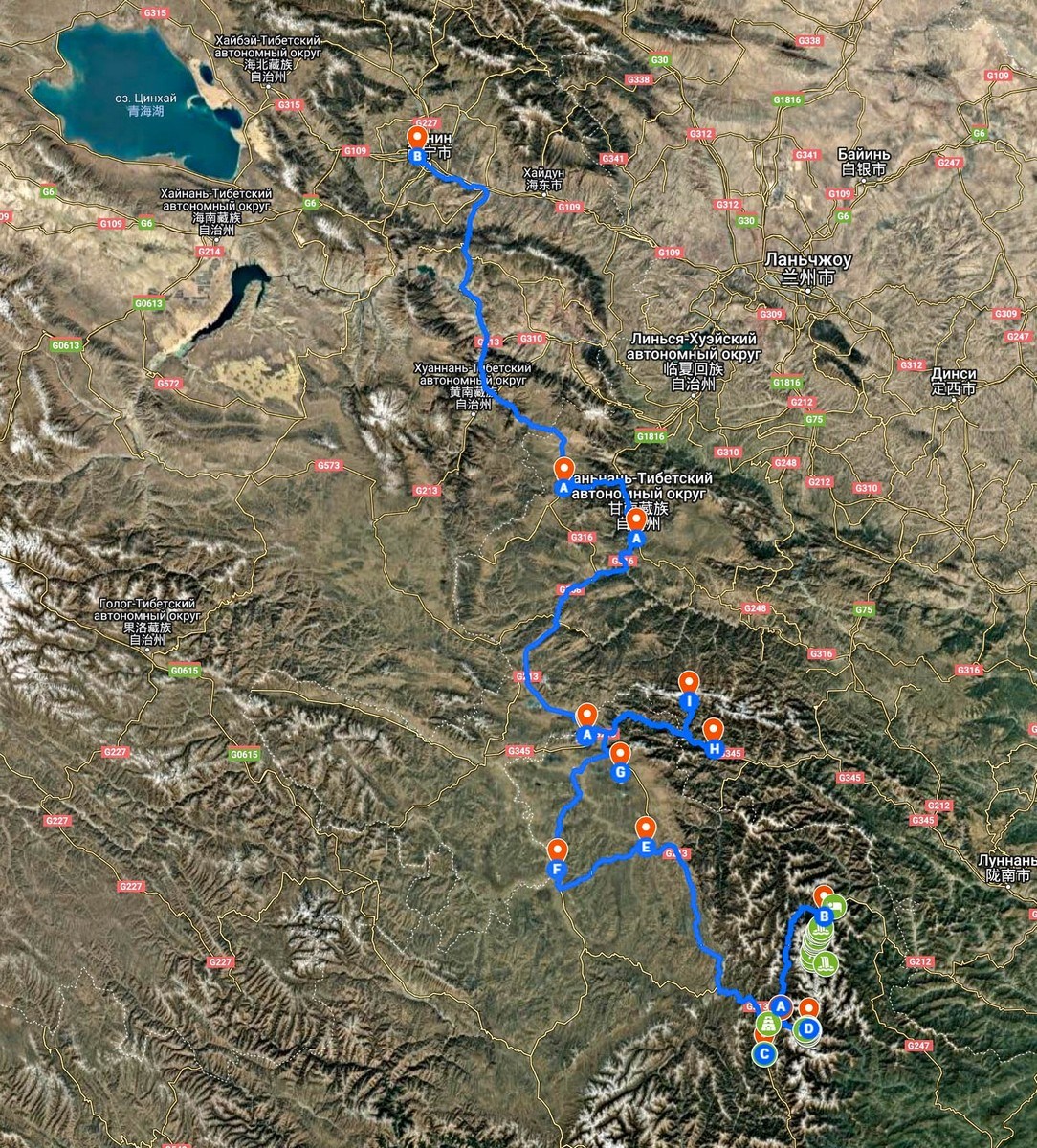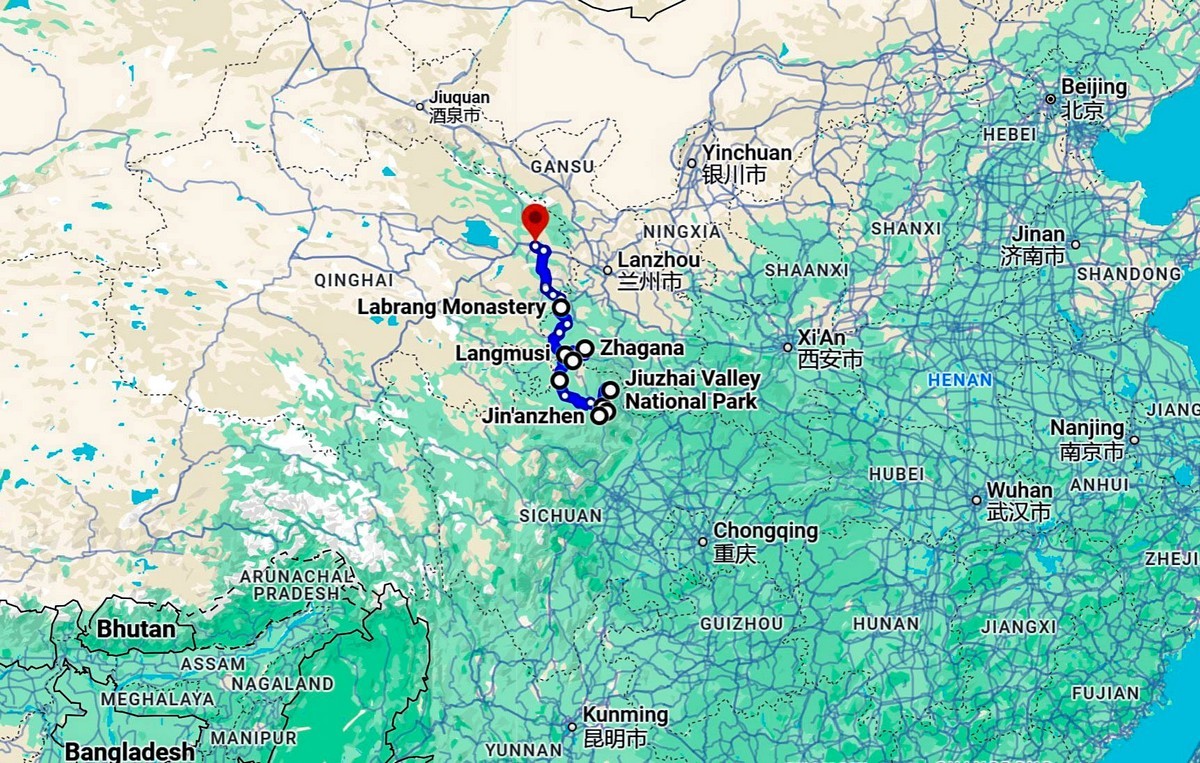February 5, 2025
The Langmu and Labrang Buddhist Temples.
Still heading north, our route was taking us through central-northern China, and since we were traveling through regions predominantly inhabited by Tibetans, our checking out some of the inevitable Buddhist temples and monasteries was… inevitable!…
First up: Langmu Temple – here. In fact, the town it’s in has not one but two Buddhist shrines. The Bailong river (meaning “White Dragon” in Chinese) divides the town in two: one side in Sichuan province, and the other in Gansu province – with each featuring its own monastery: the Sichuan Kirti Gompa and the Gansu Saichi Gompa. We were heading to the former first…
Entrance to the monastery:
Inside:
Photography is prohibited inside the temples, so here are just the temple guardians – demons guarding the entrance:
The second monastery, Saichi Gompa, turned out to be more impressive – both in terms of size and interior.
The monastery gate:
A stupa at the entrance:
There are several significant temples here:
It was nice to just walk around, soak up the sacred atmosphere – and of course capture every angle with a camera:
Here photography is allowed:
Everyday scenes: monks glued to their phones :) ->
Two cars stuck at a turn; it took them ages to untangle themselves! ->
A wonderful place! If you’re ever nearby – be sure to stop off!
Next – Labrang Monastery (here). It’s rather well-known, even having its own Wikipedia page – sparing you the need to dig through troublesome (for a foreigner) Chinese internet sources. It’s not only a monastery – but also a Buddhist university (with six faculties). Quoting a friend (because I don’t quite get all this): “Here there are faculties of Buddhist philosophy, lower and upper tantric studies, Kalachakra, Tibetan medicine, and religious law.”
Between one and two thousand monks live and study at the monastery (those numbers vary depending on the source). That figures: the monastery grounds sure ain’t small:
The monastery complex also houses the world’s longest corridor of prayer wheels – which apparently number over a thousand (with some sources claiming there are as many as 1700) ->
You could stroll around here for hours:
Unfortunately, photography inside isn’t allowed here either:
Peeking down alleys and observing daily life is also curiously intriguing:
Is that someone’s lunch delivered?! ->
Monks are gathering – perhaps for prayers? ->
Not sure what this building’s called – the prayer hall maybe? ->
Monks (students of the university?) gather in groups:
Then they take off their boots and enter the hall. How they later find their particular pair is a mystery! And all the boots are scattered about untidily and on their sides! ->
Interestingly, tourists are also allowed inside too (after throwing their boots to the floor outside – we were learning fast!)…
Alas, we didn’t get to witness a Buddhist prayer session. Perhaps it was some other event, or the students had gathered for some other purpose. One surprising and memorable moment was when a bundle of cash was passed along the rows – the student monks took what they needed and then passed it along!…
A few pics taken by my travel companion DK ->
In closing – some drone photos. The monastery occupies about a third of this small town nestled in a mountain valley:
View of the monastery:
Main buildings:
Where the student monks stay:
And on that note of high-culture-religion, the first leg of our journey through China ended. Distance-wise, we’d covered about a quarter of the planned route, but in terms of time and notable sites – about half.
A few more hours of roads and picturesque landscapes…
…And by evening, we’d reached the city of Xining – the midpoint of our journey and the starting point of a mind-blowingly scenic section of our route across vast expanses of unknown China: a large loop through deserts, mountain landscapes, salt lakes and more…
Here’s the route of the just-completed first part of our journey (more detail – here) ->
Zoomed-out view of the map:
To be continued!…
The rest of the photos from our China-2024 trip are here.
